15 Common Problem-Solving Interview Questions

In an interview for a big tech company, I was asked if I’d ever resolved a fight — and the exact way I went about handling it. I felt blindsided, and I stammered my way through an excuse of an answer.
It’s a familiar scenario to fellow technical job seekers — and one that risks leaving a sour taste in our mouths. As candidate experience becomes an increasingly critical component of the hiring process, recruiters need to ensure the problem-solving interview questions they prepare don’t dissuade talent in the first place.
Interview questions designed to gauge a candidate’s problem-solving skills are more often than not challenging and vague. Assessing a multifaceted skill like problem solving is tricky — a good problem solver owns the full solution and result, researches well, solves creatively and takes action proactively.
It’s hard to establish an effective way to measure such a skill. But it’s not impossible.
We recommend taking an informed and prepared approach to testing candidates’ problem-solving skills . With that in mind, here’s a list of a few common problem-solving interview questions, the science behind them — and how you can go about administering your own problem-solving questions with the unique challenges of your organization in mind.

Key Takeaways for Effective Problem-Solving Interview Questions
- Problem solving lies at the heart of programming.
- Testing a candidate’s problem-solving skills goes beyond the IDE. Problem-solving interview questions should test both technical skills and soft skills.
- STAR, SOAR and PREP are methods a candidate can use to answer some non-technical problem-solving interview questions.
- Generic problem-solving interview questions go a long way in gauging a candidate’s fit. But you can go one step further by customizing them according to your company’s service, product, vision, and culture.
Technical Problem-Solving Interview Question Examples
Evaluating a candidates’ problem-solving skills while using coding challenges might seem intimidating. The secret is that coding challenges test many things at the same time — like the candidate’s knowledge of data structures and algorithms, clean code practices, and proficiency in specific programming languages, to name a few examples.
Problem solving itself might at first seem like it’s taking a back seat. But technical problem solving lies at the heart of programming, and most coding questions are designed to test a candidate’s problem-solving abilities.
Here are a few examples of technical problem-solving questions:
1. Mini-Max Sum
This well-known challenge, which asks the interviewee to find the maximum and minimum sum among an array of given numbers, is based on a basic but important programming concept called sorting, as well as integer overflow. It tests the candidate’s observational skills, and the answer should elicit a logical, ad-hoc solution.
2. Organizing Containers of Balls
This problem tests the candidate’s knowledge of a variety of programming concepts, like 2D arrays, sorting and iteration. Organizing colored balls in containers based on various conditions is a common question asked in competitive examinations and job interviews, because it’s an effective way to test multiple facets of a candidate’s problem-solving skills.
3. Build a Palindrome
This is a tough problem to crack, and the candidate’s knowledge of concepts like strings and dynamic programming plays a significant role in solving this challenge. This problem-solving example tests the candidate’s ability to think on their feet as well as their ability to write clean, optimized code.
4. Subarray Division
Based on a technique used for searching pairs in a sorted array ( called the “two pointers” technique ), this problem can be solved in just a few lines and judges the candidate’s ability to optimize (as well as basic mathematical skills).
5. The Grid Search
This is a problem of moderate difficulty and tests the candidate’s knowledge of strings and searching algorithms, the latter of which is regularly tested in developer interviews across all levels.
Common Non-Technical Problem-Solving Interview Questions
Testing a candidate’s problem-solving skills goes beyond the IDE . Everyday situations can help illustrate competency, so here are a few questions that focus on past experiences and hypothetical situations to help interviewers gauge problem-solving skills.
1. Given the problem of selecting a new tool to invest in, where and how would you begin this task?
Key Insight : This question offers insight into the candidate’s research skills. Ideally, they would begin by identifying the problem, interviewing stakeholders, gathering insights from the team, and researching what tools exist to best solve for the team’s challenges and goals.
2. Have you ever recognized a potential problem and addressed it before it occurred?
Key Insight: Prevention is often better than cure. The ability to recognize a problem before it occurs takes intuition and an understanding of business needs.
3. A teammate on a time-sensitive project confesses that he’s made a mistake, and it’s putting your team at risk of missing key deadlines. How would you respond?
Key Insight: Sometimes, all the preparation in the world still won’t stop a mishap. Thinking on your feet and managing stress are skills that this question attempts to unearth. Like any other skill, they can be cultivated through practice.
4. Tell me about a time you used a unique problem-solving approach.
Key Insight: Creativity can manifest in many ways, including original or novel ways to tackle a problem. Methods like the 10X approach and reverse brainstorming are a couple of unique approaches to problem solving.
5. Have you ever broken rules for the “greater good?” If yes, can you walk me through the situation?
Key Insight: “Ask for forgiveness, not for permission.” It’s unconventional, but in some situations, it may be the mindset needed to drive a solution to a problem.
6. Tell me about a weakness you overcame at work, and the approach you took.
Key Insight: According to Compass Partnership , “self-awareness allows us to understand how and why we respond in certain situations, giving us the opportunity to take charge of these responses.” It’s easy to get overwhelmed when faced with a problem. Candidates showing high levels of self-awareness are positioned to handle it well.
7. Have you ever owned up to a mistake at work? Can you tell me about it?
Key Insight: Everybody makes mistakes. But owning up to them can be tough, especially at a workplace. Not only does it take courage, but it also requires honesty and a willingness to improve, all signs of 1) a reliable employee and 2) an effective problem solver.
8. How would you approach working with an upset customer?
Key Insight: With the rise of empathy-driven development and more companies choosing to bridge the gap between users and engineers, today’s tech teams speak directly with customers more frequently than ever before. This question brings to light the candidate’s interpersonal skills in a client-facing environment.
9. Have you ever had to solve a problem on your own, but needed to ask for additional help? How did you go about it?
Key Insight: Knowing when you need assistance to complete a task or address a situation is an important quality to have while problem solving. This questions helps the interviewer get a sense of the candidate’s ability to navigate those waters.
10. Let’s say you disagree with your colleague on how to move forward with a project. How would you go about resolving the disagreement?
Key Insight: Conflict resolution is an extremely handy skill for any employee to have; an ideal answer to this question might contain a brief explanation of the conflict or situation, the role played by the candidate and the steps taken by them to arrive at a positive resolution or outcome.
Strategies for Answering Problem-Solving Questions
If you’re a job seeker, chances are you’ll encounter this style of question in your various interview experiences. While problem-solving interview questions may appear simple, they can be easy to fumble — leaving the interviewer without a clear solution or outcome.
It’s important to approach such questions in a structured manner. Here are a few tried-and-true methods to employ in your next problem-solving interview.
1. Shine in Interviews With the STAR Method
S ituation, T ask, A ction, and R esult is a great method that can be employed to answer a problem-solving or behavioral interview question. Here’s a breakdown of these steps:
- Situation : A good way to address almost any interview question is to lay out and define the situation and circumstances.
- Task : Define the problem or goal that needs to be addressed. Coding questions are often multifaceted, so this step is particularly important when answering technical problem-solving questions.
- Action : How did you go about solving the problem? Try to be as specific as possible, and state your plan in steps if you can.
- Result : Wrap it up by stating the outcome achieved.
2. Rise above difficult questions using the SOAR method
A very similar approach to the STAR method, SOAR stands for S ituation, O bstacle, A ction, and R esults .
- Situation: Explain the state of affairs. It’s important to steer clear of stating any personal opinions in this step; focus on the facts.
- Obstacle: State the challenge or problem you faced.
- Action: Detail carefully how you went about overcoming this obstacle.
- Result: What was the end result? Apart from overcoming the obstacle, did you achieve anything else? What did you learn in the process?
3. Do It the PREP Way
Traditionally used as a method to make effective presentations, the P oint, R eason, E xample, P oint method can also be used to answer problem-solving interview questions.
- Point : State the solution in plain terms.
- Reasons: Follow up the solution by detailing your case — and include any data or insights that support your solution.
- Example: In addition to objective data and insights, drive your answer home by contextualizing the solution in a real-world example.
- Point : Reiterate the solution to make it come full circle.
How to Customize Problem-Solving Interview Questions
Generic problem-solving interview questions go a long way in gauging a candidate’s skill level, but recruiters can go one step further by customizing these problem-solving questions according to their company’s service, product, vision, or culture.
Here are some tips to do so:
- Break down the job’s responsibilities into smaller tasks. Job descriptions may contain ambiguous responsibilities like “manage team projects effectively.” To formulate an effective problem-solving question, envision what this task might look like in a real-world context and develop a question around it.
- Tailor questions to the role at hand. Apart from making for an effective problem-solving question, it gives the candidate the impression you’re an informed technical recruiter. For example, an engineer will likely have attended many scrums. So, a good question to ask is: “Suppose you notice your scrums are turning unproductive. How would you go about addressing this?”
- Consider the tools and technologies the candidate will use on the job. For example, if Jira is the primary project management tool, a good problem-solving interview question might be: “Can you tell me about a time you simplified a complex workflow — and the tools you used to do so?”
- If you don’t know where to start, your company’s core values can often provide direction. If one of the core values is “ownership,” for example, consider asking a question like: “Can you walk us through a project you owned from start to finish?”
- Sometimes, developing custom content can be difficult even with all these tips considered. Our platform has a vast selection of problem-solving examples that are designed to help recruiters ask the right questions to help nail their next technical interview.
Get started with HackerRank
Over 2,500 companies and 40% of developers worldwide use HackerRank to hire tech talent and sharpen their skills.
Programming Interview Questions
How to prepare for programming interview questions, forage find, conceptual coding interview questions, how to prepare for conceptual coding interview questions, general coding interview questions, how to prepare for general coding interview questions, common coding interview questions: the bottom line, 45 common coding interview questions.
- Share on Twitter Share on Twitter
- Share on Facebook Share on Facebook
- Share on LinkedIn Share on LinkedIn

Forage puts students first. Our blog articles are written independently by our editorial team. They have not been paid for or sponsored by our partners. See our full editorial guidelines .
Table of Contents
A coding interview can be nerve-racking, but it’s an essential part of the technical interview process to demonstrate your programming skills and knowledge of coding concepts. While the exact questions a technical recruiter might ask vary depending on what kind of role you’re applying for, there are some common coding interview questions you can prepare for to ace the interview. We’ll review the three main types of questions you’ll encounter during a coding interview and how to prepare for them.
A coding interview typically starts with an assessment of your computer programming skills. You’ll need to answer questions that demonstrate you know how to do specific tasks or functions, usually through an assessment called a whiteboard challenge or independent coding test.
>>MORE: Are Coding Bootcamps Worth It in 2024?
What questions will you get in a whiteboard challenge or independent coding test? Here are some examples:
- How do you reverse a string?
- How do you determine if a string is a palindrome?
- How do you calculate the number of numerical digits in a string?
- How do you find the count for the occurrence of a particular character in a string?
- How do you find the non-matching characters in a string?
- How do you find out if the two given strings are anagrams?
- How do you calculate the number of vowels and consonants in a string?
- How do you total all of the matching integer elements in an array?
- How do you reverse an array?
- How do you find the maximum element in an array?
- How do you sort an array of integers in ascending order?
- How do you print a Fibonacci sequence using recursion?
- How do you calculate the sum of two integers?
- How do you find the average of numbers in a list?
- How do you check if an integer is even or odd?
- How do you find the middle element of a linked list?
- How do you remove a loop in a linked list?
- How do you merge two sorted linked lists?
- How do you implement binary search to find an element in a sorted array?
- How do you print a binary tree in vertical order?
There are two main types of assessments for programming interview questions: a whiteboard challenge and a coding test.
How to Prepare for a Whiteboard Challenge
A whiteboard challenge is when you’re given a coding challenge during a live interview . You solve the problem in front of the interviewer and explain your process as you work on the challenge.
You can use the UMPIRE method to approach these problems:
U: Understand the problem M: Match the problem with the interviewer P: Plan your approach and solution I: Implement your solution R: Review your solution E: Evaluate your solution
To prepare for a whiteboard challenge, “practice talking through your problem-solving process ,” says Archie Payne, president of CalTek Staffing, an IT and technical staffing firm. “Interviewers don’t just want to see that candidates can complete the test task, they also want to get insights into how candidates approach the process. A good way to prepare is to pretend you’re teaching a programming class, and practice how you’d explain and demonstrate key concepts to someone who doesn’t know them.”
It’s less about solving everything right the first time (or even at all) and more about learning how you approach problems and solve challenges.
>>MORE: 13 Best Free Coding Bootcamps in 2024
And what happens if you don’t know the answer? Don’t panic.“Be honest that this is a gap in your knowledge,” Payne says. “Take a moment to think critically about the problem and the ways you’d likely approach it, then explain that process to the interviewer. Hiring managers don’t necessarily expect entry-level candidates to have all the answers, but they do want to hire someone who’s self aware about what they do and don’t know, and willing to learn and try new things.”
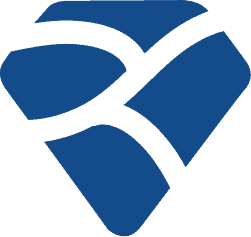
LeetCode is a great resource for practicing these types of questions. You can create a free account and practice hundreds of coding questions you might get in an interview.
How to Prepare for an Independent Coding Test
An independent coding test focuses on your ability to code and solve problems within a given time frame. You may have an independent coding test after your whiteboard test or before as part of a screening.
The company will give you a link to a common code editor, and you can choose what programming language you want to write in. Before you start the test, you’ll know how long you have to complete it and whether you’ll be able to leave the platform during the test. Make sure you do the test in a quiet environment where you won’t have distractions.
To prepare for this part of the interview, “simulate interview conditions,” Mohit Maheshwari, co-founder at NMG Technologies, a full-service IT company, says. “Practice coding on a whiteboard or a blank sheet of paper, as this is how you will be doing it during the interview. Get used to writing code without the aid of an IDE [integrated development environment] or compiler.”
Need to practice your coding skills? A Forage job simulation can help you build the skills you need to ace the interview — and give you experience you can talk about during the interview.
| Java, RESTful Web Development, HTTP | |
| Data structures, object-oriented design, code analysis, code readability | |
| Data modeling, system design, Java, Spring | |
| Python, cloud security | |
| System design, Java, APIs |
The recruiter or hiring manager will also ask conceptual coding interview questions to learn whether you’re familiar with the concepts you’ll be working with.
“Expect questions on basic data structures such as arrays, linked lists, trees, and graphs, as well as common algorithms like sorting and searching,” Maheshwari says.
Examples of these questions include:
- What is a data structure?
- What is an array?
- What is a linked list?
- What is the difference between an array and a linked list?
- What is LIFO?
- What is FIFO?
- What is a stack?
- What are binary trees?
- What are binary search trees?
- What is object-oriented programming?
- What is the purpose of a loop in programming?
- What is a conditional statement?
- What is debugging?
- What is recursion?
- What are the differences between linear and non-linear data structures?
Preparing for conceptual coding interview questions requires two focuses: knowing the concepts, then knowing how to explain them.
First, refamiliarize yourself with these concepts. If you studied coding at school, look through your notes, textbooks, and past exams to make sure you understand each concept. Be sure you not only know the definition of the concept, but how to put that concept into context; memorizing index card definitions isn’t the goal.
Then, you can practice by explaining them clearly to someone who doesn’t have technical knowledge. While the recruiter or hiring manager you talk to should have basic technical know-how, explaining the term to someone without it ensures you really know the ins and outs of the concept because you have to break it down very clearly.
Knowing how to explain complex technical terms to non-technical people is also a soft skill that employers look for — be sure to show this skill off in the interview!
>>MORE: Learn explanations of common software engineering technical concepts with entry-level software engineering interview questions (and answers) .
Outside of programming questions and questions about technical concepts, you might answer questions about your general experience, like how you learned to code, behavioral interview questions , and how you keep your skills fresh.
Examples of general common coding interview questions include:
- What programming languages do you have experience working with?
- Describe a time you faced a challenge in a project you were working on and how you overcame it.
- Walk me through a project you’re currently or have recently worked on.
- Give an example of a project you worked on where you had to learn a new programming language or technology. How did you go about learning it?
- How do you ensure your code is readable by other developers?
- What are your interests outside of programming?
- How do you keep your skills sharp and up to date?
- How do you collaborate on projects with non-technical team members?
- Tell me about a time when you had to explain a complex technical concept to a non-technical team member.
- How do you get started on a new coding project?
Preparing for general coding interview questions is similar to how you might prepare for any other interview: reviewing your experience and preparing to talk about specific situations you’ve navigated in the workplace.
“Be prepared to explain your expertise in the languages you know and what types of projects you’ve completed using them,” Payne says. “The ability to troubleshoot and correct issues as you go is a key skill for programmers at all career levels. The best answer will focus on the steps you take to diagnose and fix issues, rather than the intricate details of the specific problem you’re describing.”

Interview Preparation: Own Your Story
Learn how to identify your strengths, ask memorable questions in an interview, and share your experience effectively.
Avg. Time: 3-4 hours
Skills you’ll build: Storytelling, career and self development, interview preparation
It’s OK if you don’t have any prior professional experience. You can still draw from examples in the classroom, at an internship , or working on an independent project.
Programming interview questions generally come in three different forms: practical coding tests, questions about technical concepts, and general questions about your experience. To ace a coding interview, prepare carefully for each section: practice problems, review concepts, and use the STAR method to shape answers about your experience.
Are you getting ready for a coding interview? Practice sample coding problems with matrices and arrays and learn what hiring managers look for in technical interviews with Girls Who Code’s Technical Interview Prep .

Related Posts
Interview angst here’s what not to say in an interview, how to prep for consulting interview questions, 22+ financial analyst interview questions (and answers), upskill with forage.

Gain job skills you can talk about in interviews.

- Prep Courses
- Coding Questions
- Behavioral Questions
- Build Your Portfolio
- Goal-Setting
- Productivity
- Start a Blog
- Software Engineer
- Game Development
- Blockchain Developer
- Cloud Computing
- Web3 Developer
- The Complete Software Developer’s Career Guide
- 10 Steps to Learn Anything Quickly
- How to Market Yourself as a Software Developer
- Create a Blog That Boosts Your Career
- 10 Ways to Make Money From Your Blog
- Best Coding Hardware
- Blockchain Languages
Top 109 Scary Coding Interview Questions SOLVED with Answers
Written By John Sonmez

I know the feeling.
You’re before a big coding interview.
Yeah, you’ve got your education. You've become a software developer to the best of your ability . You’ve been putting in the coding reps.
But still.. Now, months or weeks before the big day..
Suddenly you’re starting to feel.. clueless. And to be honest – a bit scared.. or more than a bit!
[pullquote align=”normal”] What will those mean recruiters ask you? [/pullquote]
I’ve been through many coding interviews. More recently I’ve been on the other side, too – as an interviewer. I’ve even written a book all about programming interviews.
Why are coding interviews so hard?
Coding interviews ARE getting harder. Programmers are studying more to prepare. It’s getting more competitive. Interviewers adapt — by asking harder questions.
Also, it's just stressful to code under pressure. And the questions are often kept too short to be used as a useful screening tool. Instead they're tripping up even good coders.
But… if you’re smart and disciplined about preparing, you can still dominate that interview !
Study these questions inside-out.
Today I’ll spill the secret on the questions you face during a coding interview and how you tackle them successfully.
To ace your programming interview , you need to prepare with real programming interview questions. Practice on real problems and learn their patterns.
You’ll impress the interviewers with your informed, to-the-point answers, to where they’d be dumb not to hire you .
The world needs more great programmers (YOU!!) with well-paid jobs – so you can keep making the world a better place.
I sincerely wish that for you.
Good luck![blank_space height='0.1em']
[blank_space height='0.1em']
The 5 Types of Coding Interview Questions to Master
Take a moment.
Put on the shoes of who’s asking you the coding interview questions.
Recruiters want the full picture . They want to know about:
- your CODING KNOWLEDGE about basic programming concepts[blank_space height='1em']
- y our CODING SKILLS , mostly related to data structures (arrays, strings, linked lists, binary trees..), concepts (bit manipulation, design patterns..) & algorithms[blank_space height='1em']
- your LOGICAL ABILITY in general. Sure, intelligence is mostly inherited. But anyone can work to get everything out of their God-given level of intelligence: By practicing logic puzzles and refining their logic skills. [blank_space height='1em']
- your PROBLEM SOLVING PROCESS – it’s what makes you a good programmer vs. “just a coder”[blank_space height='1em']
- your PERSONALITY – and how well it fits their company’s culture & goals. These are the so-called “behavioral” interview questions.[blank_space height='0.5em']
The 5 categories:
- Coding knowledge
- Coding skills
- Logical ability
- Problem-solving
- Personality
Prepare yourself for questions in each of these areas. You’ll know what’s coming, and you’ll be able to give a smart answer.
Show up to your programming interview (in-person or via video ) well-prepared for these types of questions.
It’s your chance to outshine the other candidates.
Now, on to the 5 types of coding interview questions you need to master : [blank_space height='0.1em']
1. Basic programming interview questions
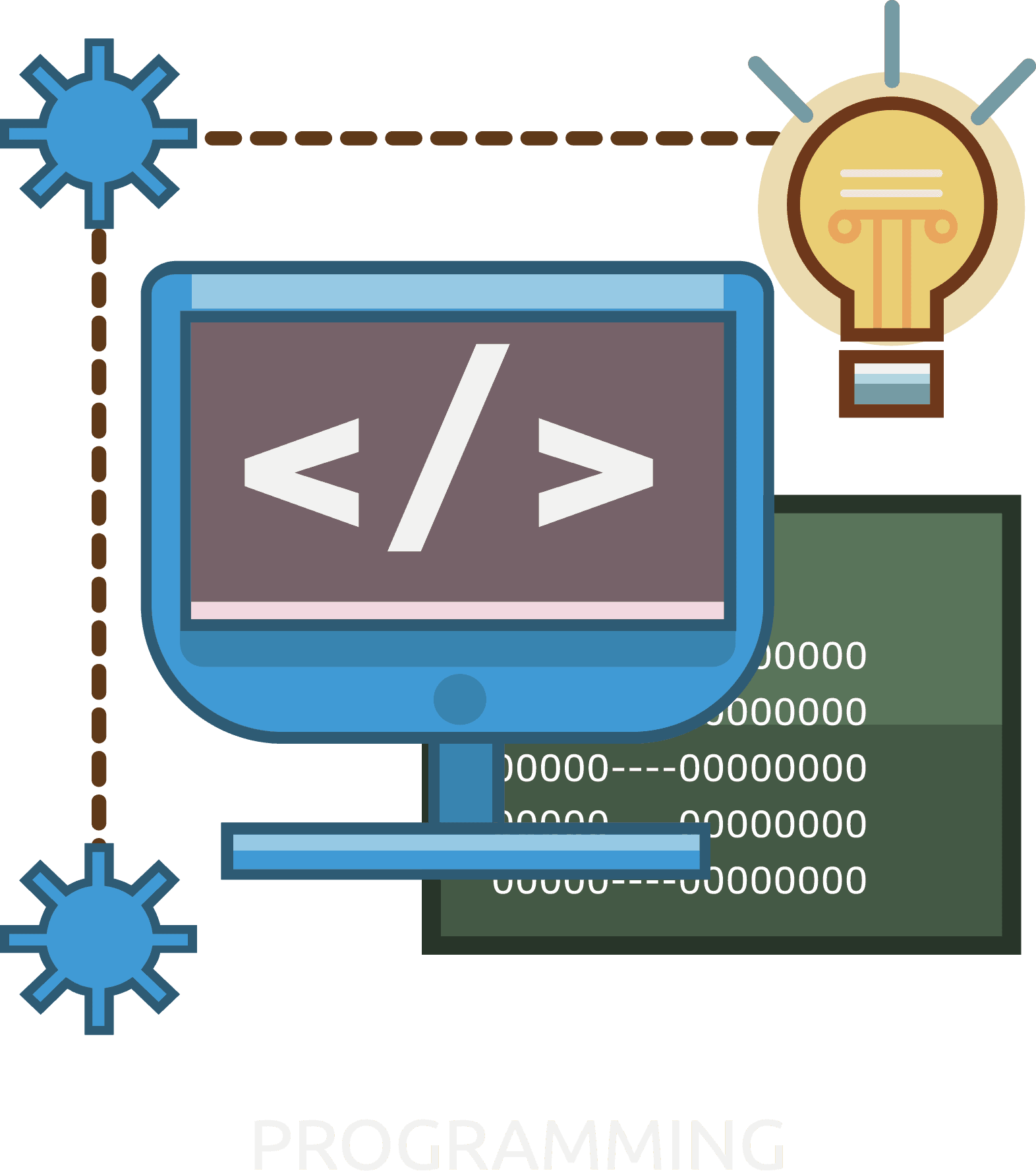
Early in the interview (and also throughout), interviewers are looking to test you on your programming fundamentals.
These are questions on general programming terms, concepts, and functions.
If you struggle on the basics, they’ll be able to quickly cross you off the list of job prospects.
Coding Interview Questions for Freshers
If you're a fresher looking forward to your first coding interviews, start with the more basic questions in this article. Once you've mastered them, you can move on to more difficult questions, problems, and puzzles. Work on the “freshers” questions first, and you'll be ready for the most advanced stuff. But it all builds on the basics!
So make sure you understand these basic programming concepts:
The Top 13 General Coding, Design & Programming Fundamentals Questions

See how many of these questions you can answer in a row without slowing down.
1. What are the pros and cons of your chosen technology?
[thrive_toggles_group”][thrive_toggles title=”Answer” no=”1/1″]
If your favorite technology is Node.js, for example — you need to be able to answer this technical question thoroughly because it's going to show your depth of knowledge in this specific area.
And since you're more likely going to be interviewing for a Node.js job , pros and cons are often overlooked. And people just go, oh yeah, I use JavaScript . I use Node. They don't actually know the pros to use it, and they don't actually know the cons. And when they give answers, they might just say, “Oh yeah. Object oriented. Oh yeah. Great with memory.”
Don't be vague. Be to the point.
Find some pros and cons of your technology, and better yet, find pros and cons of anything on your resume.
[/thrive_toggles][/thrive_toggles_group]
2. What are variables? [thrive_toggles_group”][thrive_toggles title=”Answer” no=”1/1″] Without variables, you don’t have a program. Variables are values that change within a program, based on the overall conditions and the “work” the program is doing. Variables are values stored or “declared” within the program and represent the working data set for the program. Variables = data sets + algorithms.[/thrive_toggles][/thrive_toggles_group]
3. What is inheritance? [thrive_toggles_group”][thrive_toggles title=”Answer” no=”1/1″]
Inheritance is one of the core concepts of object-oriented programming (OOP) languages. It is a mechanism where you can to derive a class from another class for a hierarchy of classes that share a set of attributes and methods.
You can use it to declare different kinds of exceptions, add custom logic to existing frameworks, and even map your domain model to a database. ( Source )
4. What is polymorphism? [thrive_toggles_group”][thrive_toggles title=”Answer” no=”1/1″]
Polymorphism allows new objects in programming to assume the properties of existing objects. The object providing the inherited characteristics is known as a “base class” or “superclass.”
This is a program’s ability to process an object differently, according to its type or class. Picture a car versus a tank. Polymorphism would be a system that provides a blueprint for the systems they have in common and works across both types of vehicle.
5. What are pointers? [thrive_toggles_group”][thrive_toggles title=”Answer” no=”1/1″]
Pointers contain memory addresses for other values. Manipulating pointers can save time versus manipulating the data the pointers refer to. This can be an efficient way to write programs that manipulate data.
Pointers are used often in C, but less so in Java.
6. Name four types of storage classes. [thrive_toggles_group”][thrive_toggles title=”Answer” no=”1/1″]
Register, static, external, and automatic.
- Register: These are storage classes kept in the register of the central processing unit.
- Static: This is a storage class in which the variable does not change. It is declared at the beginning stages of the programming task.
- External: A storage class local to a piece of hardware, such as device drivers. These say to the compiler: “If I need this variable again, read it from the external device for the most current value.”
- Automatic: A storage class in which blocks or functions define local variables.
7. What is encapsulation? [thrive_toggles_group”][thrive_toggles title=”Answer” no=”1/1″]
This is one of the most important concepts in object-oriented design. It involves bundling together a class with a set of instructions. In encapsulation, an object includes not just its data but also functions that can mutate that data. Encapsulation may be used to hide the nature of the data while still facilitating interaction.
8. Name seven data types. [thrive_toggles_group”][thrive_toggles title=”Answer” no=”1/1″]
- Floating point
9. Name six data structure types. [thrive_toggles_group”][thrive_toggles title=”Answer” no=”1/1″]
- Linked lists
10. What is the difference between a “declaration” and a “definition” of a particular function or variable? [thrive_toggles_group”][thrive_toggles title=”Answer” no=”1/1″]
A declaration involves the type and function of an identifier and describes what the linker requires to reference it. A definition describes what the compiler needs to do to interact with the identifier. Sometimes a declaration provides an initial value, and sometimes the definition provides the value.
11. What is the difference between an interpreter and a compiler? [thrive_toggles_group”][thrive_toggles title=”Answer” no=”1/1″]
An interpreter executes commands directly, while a compiler converts those commands (the program) from source code to machine code. Compiled programs run faster than interpretive languages and can be used at scale.
- Interpretive language examples: Basic, Korn Shell, Ruby, Python
- Compiler language examples: Java, C++
12. What are the functions of object-oriented design? [thrive_toggles_group”][thrive_toggles title=”Answer” no=”1/1″]
- Encapsulation
- Polymorphism
- Inheritance
- Abstraction
13. What is a real-time operating system? [thrive_toggles_group”][thrive_toggles title=”Answer” no=”1/1″]
A real-time operating system (OS) processes data as it becomes available, without a buffering period.
- Example of a real-time OS: Controlling factory machinery in real-time. Not necessarily instant, but essentially on-demand.
- Examples of non-real-time OS: Windows and macOS. Response time is not as important.
[/thrive_toggles][/thrive_toggles_group] [blank_space height='0.1em']
2. Data structures & algorithms interview questions and answers

You need to know Data Structure and Algorithm inside-out.
Yes, you'll learn a lot of new concepts by simply attempting to solve these questions. I still suggest you first refresh your knowledge of Data Structure and Algorithms before you dive head-first into the questions!
Make sure you can create them from scratch. The questions about them may be basic or not – the more you’re able to create them from scratch, the more easily you can answer any interview question about them, whether basic or not so basic.
How to approach any technical programming question
- Ask questions.
- Create an algorithm.
- Write “Pseudo” code first.
- Write your code without rushing.
- Test your code – thoughtfully fix mistakes.
(This is the process outlined in the classic Cracking the Coding interview by Gayle Laakmann)
Database questions: The Top 7
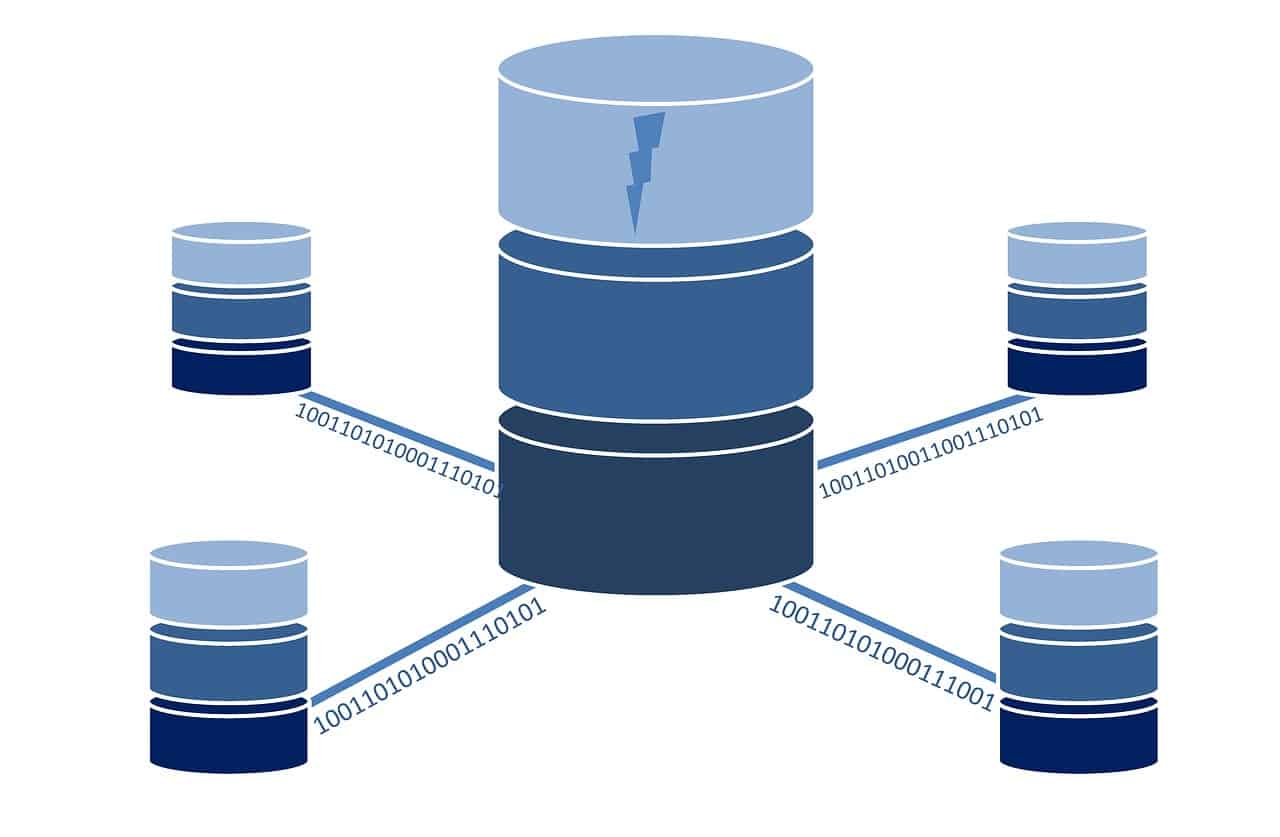
Coding for databases might involve using languages such as Python , Java, and C# to build and implement web-based , cloud-based, and mobile applications that individuals and organizations can use to interact with collections of information.
Not every programming career will require expertise in database management systems.
But it doesn’t hurt to learn the major concepts around databases.
14. Define the word “database.” What kind of interactions does a database management system provide? [thrive_toggles_group”][thrive_toggles title=”Answer” no=”1/1″]
A database is any electronic system that contains data and allows it to be used, accessed, updated, and processed.
Database management systems (DBMS) allow administrators, applications, software, and end users to interact with the data stored on the database.
15. How do database management systems improve on the functionality of file-based systems? [thrive_toggles_group”][thrive_toggles title=”Answer” no=”1/1″]
A file-based system may be interacted with directly by users, but not necessarily concurrently. Data-based management provides mediation between the file system and the application programming interfaces (APIs) being used and is more likely to facilitate multiple users at once. However, these users cannot change the same data at the same time.
16. What are the three main types of database technology?
- Structure/data : Useful when writing a program that needs to store, manipulate, or read data—but where a full database implementation is not desirable.
- Navigational: Navigational databases are associated with hierarchical or network models. This describes a database where objects are processed iteratively, one by one.
- SQL/relational: This stands for “ structured query language .” Used to retrieve or update information in a database.
17. What is normalization used for?
Normalization reorganizes data to eliminate redundancy and save disk space. It does so by creating multiple tables and outlining the relationships between them.
18. What is the difference between DDL and DML?
DDL stands for “data definition language.” It specifies the structure of a database. DML stands for “data manipulation language” and refers to how data is to be retrieved or modified from said database.
19. Why is database partitioning necessary?
Partitioning improves efficiency and data availability and minimizes data loss by creating separate, more stable, and more available separate filesystems. Partitioning allows for parallel processing or separating partitions that need to be accessed more or less often.
20. What is an entity—and what is an entity set?
[thrive_toggles_group”][thrive_toggles title=”Answer” no=”1/1″]An entity is a discrete object or data point, such as a person or place. An entity set groups entities of the same type.
In Java, an entity is an instance of a class. For example: Class = “car.” Instance/entity = “Cadillac CTS.” [/thrive_toggles][/thrive_toggles_group] [blank_space height='0.1em']
Array Coding Interview Questions
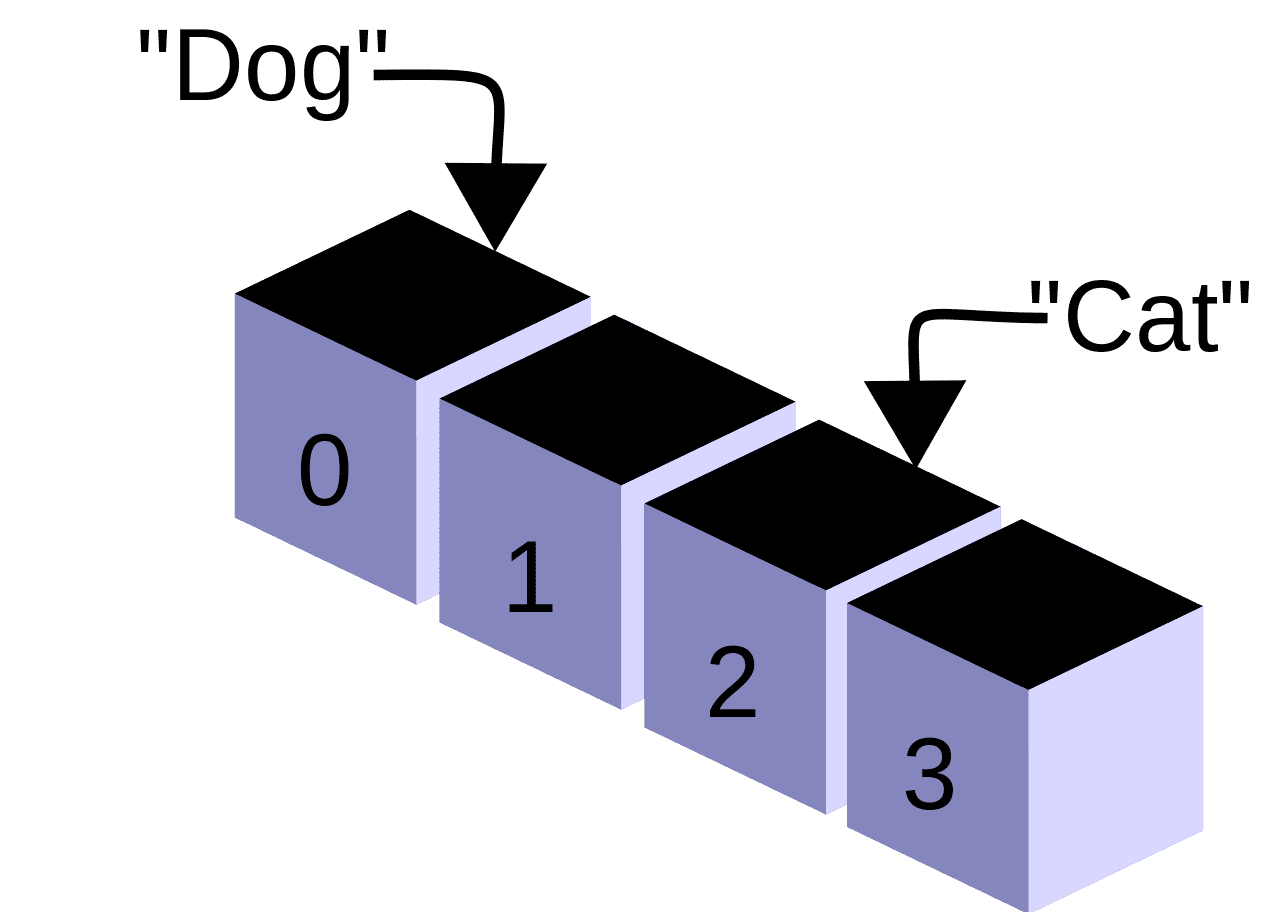
Arrays are the most common data structure in programming—and a vital component in determining how information is accessed . If you have variables as the fundamental building blocks, arrays are the next step up.
It's one of the darling topics of interviewers and you'll hear a lot of questions about arrays in any coding interview, e.g. reversing an array, sorting the array, or searching elements on the array.
The key benefit of an array data structure is that it offers fast O(1) search if you know the index, but adding and removing an element from an array is slow because you cannot change the size of the array once it’s created.
In order to create a shorter or longer array, you need to create a new array and copy all elements from old to new.
[thrive_text_block color=”orange” headline=””] The key to solving array-based questions is having a good knowledge of array data structure as well as basic programming constructors such as loop, recursion, and fundamental operators. [/thrive_text_block]
Here are the top 12 questions about arrays you're likely to get asked at your coding interview:
21. How would you check whether an array contains only digits?
22. How would you go about finding all the permutations of a given array?
23. How do you find the missing number in a given integer array of 1 to 100? ( Solution )
24. How do you find the duplicate number on a given integer array? ( Solution )
25. How do you find the largest and smallest number in an unsorted integer array? ( Solution )
26. How do you find all pairs of an integer array whose sum is equal to a given number? ( Solution )
27. How do you find duplicate numbers in an array if it contains multiple duplicates? ( Solution )
28. How are duplicates removed from a given array in Java? ( Solution )
29. How is an integer array sorted in place using the quicksort algorithm? ( Solution )
30. How do you remove duplicates from an array in place? ( Solution )
31. How do you reverse an array in place in Java? ( Solution )
32. How are duplicates removed from an array without using any library? ( Solution ) [blank_space height='0.1em']
Trees – The Top 15 Interview Questions and Answers
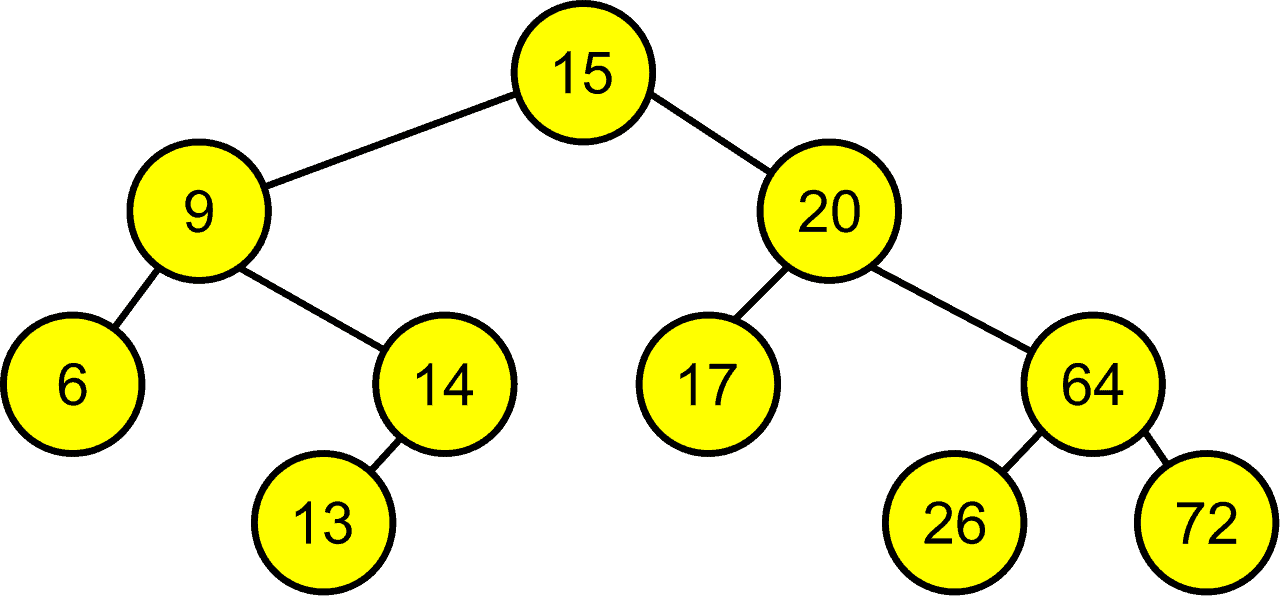
The following three categories—trees, graphs, and lists—are similar in some fundamental ways, but they still require some specialized knowledge that you might have to call upon during your interview. How well do you know your way around linear and nonlinear data structures?
In Java, trees contain packages that describe how to manipulate lists.
All information in the real world cannot be represented in linear fashion, and that’s where tree data structure helps.
Tree data structure is a data structure that allows you to store your data in a hierarchical fashion. Depending on how you store data, there are different types of trees, such as a binary tree, where each node has, at most, two child nodes.
Along with its close cousin binary search tree, it’s also one of the most popular tree data structures. Therefore, you will find a lot of questions based upon them, such as how to traverse them, count nodes, find depth, and check if they are balanced or not.
A key point to solving binary tree questions is a strong knowledge of theory, e.g. what is the size or depth of the binary tree, what is a leaf, and what is a node, as well as an understanding of the popular traversing algorithms, e.g. pre-, post-, and in-order traversal.
Here's a list of 15 popular binary tree-based coding questions from software engineer or developer job interviews:
33. What is a binary search tree, and what is it used for?
A binary tree is a data structure that has two “children” and facilitates the study of data that bifurcates.
34. Name five types of trees.
- Binary trees
- Binary search trees
35. How is a binary search tree implemented? ( Solution )
36. How do you perform preorder traversal in a given binary tree? ( Solution )
37. How do you traverse a given binary tree in preorder without recursion? ( Solution )
38. How do you perform an inorder traversal in a given binary tree? ( Solution )
39. How do you print all nodes of a given binary tree using inorder traversal without recursion? ( Solution )
40. How do you implement a postorder traversal algorithm? ( Solution )
41. How do you traverse a binary tree in postorder traversal without recursion? ( Solution )
42. How are all leaves of a binary search tree printed? ( Solution )
43. How do you count a number of leaf nodes in a given binary tree? ( Solution )
44. How do you perform a binary search in a given array? ( Solution )
Problem-solving with trees:
45. How would you go about mirroring a binary tree?
46. How do you count a number of leaf nodes in a given binary tree?
47. How would you check whether a tree is balanced or not? [blank_space height='0.1em']
Graphs Questions
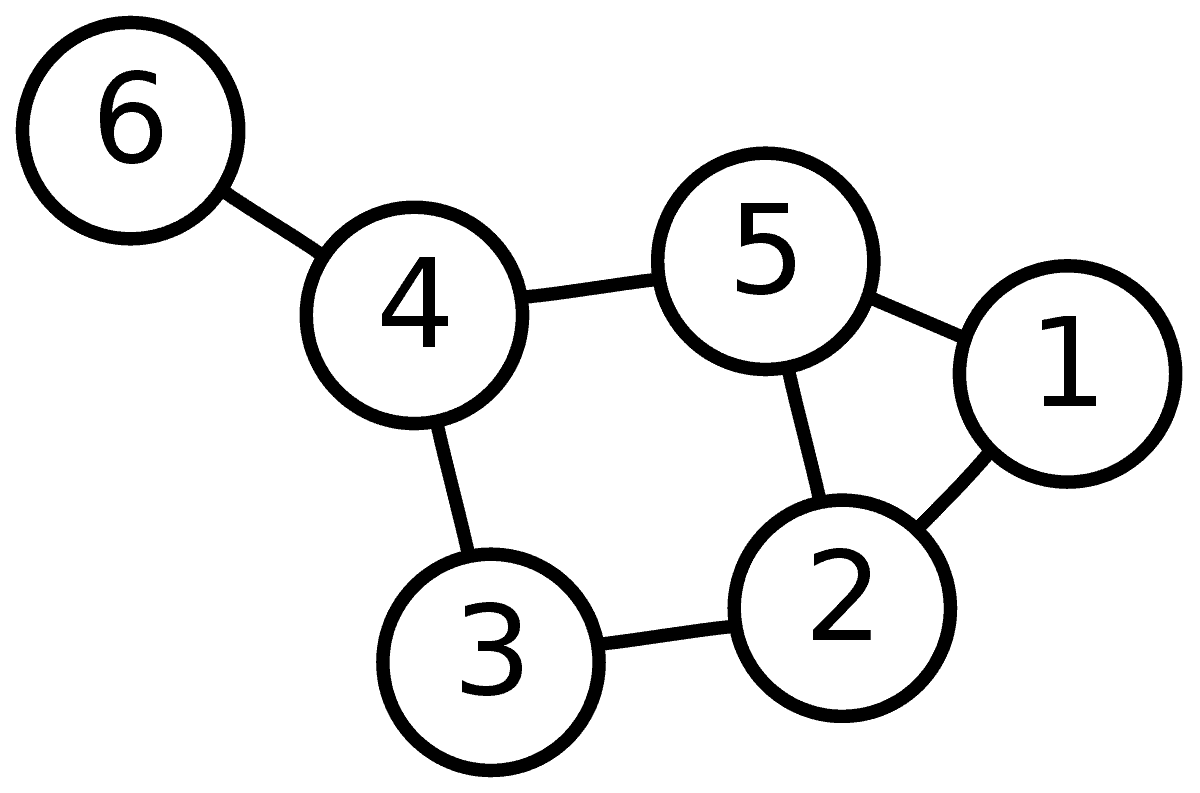
Graphs are nonlinear data structures composed of multiple nodes and edges, or “vertices.” Graphs can represent networking architecture and can be deployed to solve practical problems. Broadly, they describe directed or undirected relationships.
48. What is depth-first search, or traversal, for graphs?
Depth-first search (DFS) searches graphs and trees by beginning at the root node and following each branch as far as it can before it backtracks. DFS may be used to detect cycles in a graph, to find a path, and to locate strongly connected components.
49. What is a breadth-first traversal for graphs?
Breadth-first traversal (BFS) examines sibling nodes first and children nodes second. BFS may be used in peer-to-peer networking for finding the shortest path and even in web crawlers used in search engines.
50. Given a particular graph, how would you determine whether or not it cycles? [blank_space height='0.1em']
Lists questions in coding interview
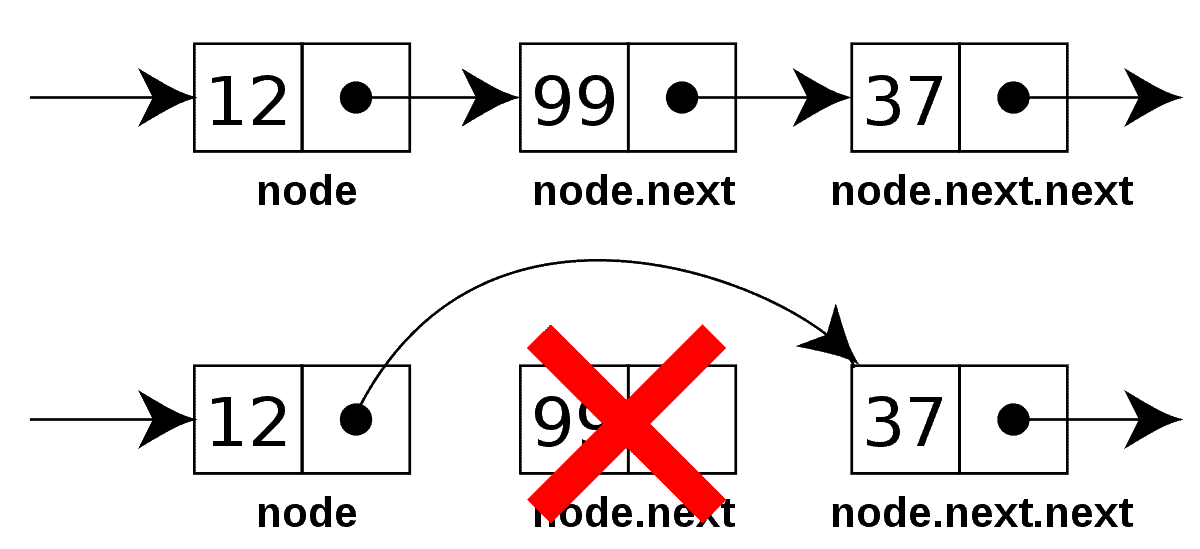
A linked list is another common data structure that complements the array data structure.
Similar to the array, it is also a linear data structure and stores elements in a linear fashion.
However, unlike the array, it doesn’t store them in contiguous locations; instead, they are scattered everywhere in memory, which is connected to each other using nodes.
[pullquote align=”normal”] A linked list is nothing but a list of nodes where each node contains the value stored and the address of the next node.[/pullquote]
Because of this structure, it’s easy to add and remove elements in a linked list, as you just need to change the link instead of creating the array, but the search is difficult and often requires O(n) time to find an element in the singly linked list.
It also comes in varieties like:
- a singly linked list, which allows you to traverse in one direction (forward or reverse)
- a doubly linked list, which allows you to traverse in both directions (forward and backward)
- a circular linked list, which forms a circle
[thrive_text_block color=”orange” headline=””] In order to solve linked list-based questions, a good knowledge of recursion is important, because a linked list is a recursive data structure.
If you take one node from a linked list, the remaining data structure is still a linked list, and because of that, many linked list problems have simpler recursive solutions than iterative ones.[/thrive_text_block]
Here are 8 of the most common and popular linked list interview questions and their solutions :
51. How do you find the middle element of a singly linked list in one pass? ( Solution )
52. How do you check if a given linked list contains a cycle? How do you find the starting node of the cycle ( Solution )
53. How do you reverse a linked list? ( Solution )
54. How do you reverse a singly linked list without recursion? ( Solution )
55. How are duplicate nodes removed in an unsorted linked list? ( Solution )
56. How do you find the length of a singly linked list ( Solution )
57. How do you find the third node from the end in a singly linked list? ( Solution )
58. How do you find the sum of two linked lists using Stack? ( Solution ) [blank_space height='0.1em']
Algorithmic interview questions

Algorithms are often the bread and butter of a coding professional’s career. You know them as the recipe that powers how data is gathered, sorted, and ultimately made useful in other processes.
You can expect algorithm-related questions such as these 7:
59. How is a bubble sort algorithm implemented? ( Solution )
60. How is an iterative quicksort algorithm implemented? ( Solution )
61. How do you implement an insertion sort algorithm? ( Solution )
62. How is a merge sort algorithm implemented? ( Solution )
63. How do you implement a bucket sort algorithm? ( Solution )
64. How do you implement a counting sort algorithm? ( Solution )
65. How is a radix sort algorithm implemented? ( Solution ) [blank_space height='0.1em']
String Coding Interview Questions
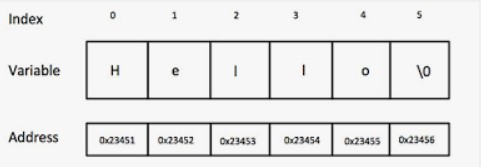
Along with array and linked list data structures, a string is another popular topic on programming job interviews. I have never participated in a coding interview where no string-based question was asked.
A good thing about the string is that if you know the array, you can solve string-based questions easily, because strings are nothing but a character array.
So all the techniques you learn by solving array-based coding questions can be used to solve string programming questions as well.
Here's my list of 11 frequently asked string coding questions from programming job interviews:
66. How do you print duplicate characters from a string? ( Solution )
67. How do you check if two strings are anagrams of each other? ( Solution )
68. How do you print the first non-repeated character from a string? ( Solution )
69. How can a given string be reversed using recursion? ( Solution )
70. How do you check if a string contains only digits? ( Solution )
71. How are duplicate characters found in a string? ( Solution )
72. How do you count a number of vowels and consonants in a given string? ( Solution )
73. How do you count the occurrence of a given character in a string? ( Solution )
74. How do you find all permutations of a string? ( Solution )
75. How do you reverse words in a given sentence without using any library method? ( Solution )
76. How do you check if two strings are a rotation of each other? ( Solution )
77. How do you check if a given string is a palindrome? ( Solution )
These questions help you improve your knowledge of string as a data structure.
If you feel that your understanding of binary tree coding is inadequate and you can’t solve these questions on your own, I suggest you go back and pick a good data structure and algorithm book .[blank_space height='0.1em']
3. Programming Interview Logical Questions and Solutions
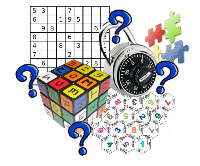
Apart from data structure-based questions, most of the programming job interviews also ask general logic-based questions, which I’ll describe in this section.
It’s important that you practice these concepts because sometimes they become tricky to solve in the actual interview.
Having practiced them before not only makes you familiar with them, but also gives you more confidence in explaining the solution to the interviewer.
Here are 9 Logic & Math questions:
78. How do you swap two numbers without using the third variable? ( Solution )
79. How do you check if two rectangles overlap with each other? ( Solution )
80. How do you design a vending machine? ( Solution )
Logical Math and Probability Interview Questions
81. What's the formula to check if a number is even?
num % 2 == 0
82. What's the formula for the Sum of 1 to N?
1 + 2 + … + (N – 1) + N = (N+1) * N/2
83. What's the math formula for the Sum of Geometric Progression?
2 0 + 2 1 + 2 2 + 2 3 + … 2 n = 2 n+1 – 1
84. Given two fair dices, what is the probability that two dices sum to 8?
There are 36 (6*6) outcomes for tossing two fair dices, and the outcomes when two dices sum to 8 are:
(2, 6), (3,5), (4,4), (5,3), (6,2);
The probability of two dices sum to 8 is 5/36. Source
85. There are 100 people standing in a circle. The person standing at 1st position kills the next person (i.e.the person standing at 2nd position) and gives the sword to next to next person (i.e. the person standing at 3rd position ). Which person survives in the end?
If the total number of people is not in power of 2, then the person at nth position of the Arithmetic Progression defined below will always survive.
Arithmetic Progression ( X ) = a + d * ( n – 1 ) where, a = 3 d = 2 n = Total number of persons – Greatest nth root of 2 less that total number of persons
So for a circle of 100 persons:
X = 3 + 2 * ( 100 -64 – 1 ) = 73
86. How do you check for Primality? ( Solution ) [blank_space height='0.1em']
4. Problem solving interview questions for software engineer or coder jobs

Some programming interviews will build to some kind of practical, hands-on, or problem-solving demonstration to see how well you can improvise and bring together the major and minor programming concepts.
Remember that the most important underlying skill for any type of programmer is the ability to think logically.
11 problem-solving questions for you to practice:
87. Here’s an example of a problem involving random selection:
[thrive_toggles_group”][thrive_toggles title=”Example” no=”1/1″] If you had an array of 52 numbers, such as a deck of cards, it would be easy to choose one at random. Your task is to generate a number between 1 and 52 and use that as the index to your array. In other words, derive a system whereby a number or card is chosen at random from a set or deck with all numbers or cards equally probable.[/thrive_toggles][/thrive_toggles_group]
88. Here’s a more difficult variation:
[thrive_toggles_group”][thrive_toggles title=”Example” no=”1/1″]
Imagine you can neither see the whole set at once nor store it. In other words, you’re not told how many total numbers there will be, and you are shown only one number at a time. You cannot store all the numbers you are shown, and you are only told when you’ve seen the final number of the set.
If you are allowed to store two numbers at most, can you respond with a random number, chosen in an equiprobable manner, from that one-at-a-time set or stream immediately upon being told the stream is complete?
89. Here’s how to solve this problem:
You need store only two numbers: the total count of numbers seen so far, and your current candidate response, selected from the number stream if it were to end at that point.
When you are shown the first number, you have a count of one. Therefore, your candidate response must be the first and only number seen—it has a probability of one out of one. If you are shown a second number, it becomes your new candidate response with a probability of one out of two. Likewise, a third number will become the new candidate response with a probability of one out of three, and so on.
Thus, as each new number is seen, generate a random number between one and the number of data points seen to that point (N). If your random number is equal to N, then keep the number you were just presented with as your new possible response. Otherwise, keep the answer previously saved through this same logic.
You perform this selection update each time you see a new data point. When you are told the stream is done, the saved value is the right response, chosen equiprobably from all the numbers seen. The probability is 1 out of N regardless of how many there were before the stream stopped.
Here are some other problems to work through:
90. Write an algorithm to find each instance of a given word in a selection of text.
91. Write a program to generate a random number from within a given range.
92. How do you check if a string contains only digits?
93. Given two strings of characters, find the minimum number of changes required to convert string 1 to string 2.
94. How do you count a number of vowels and consonants in a given string?
95. Given a grid where each square has a numerical value, how would you code a solution for finding the lowest-value route from one side of the grid to the other?
Problem-solving questions on scalability
96. Find all documents that contain a list of words
97. Design data structures for a social media network ( Solution ) [blank_space height='0.1em']
5. Behavioral Programming Interview Questions – How do you fit their culture?
By asking so-called behavioral questions during your programming interview, they're trying to figure out if your personality will fit their company's culture.
If you're arrogant, you get argumentative and defensive quickly when someone criticizes you, or you start blaming others, they'll take that as a reason to reject you for the job.
Soft skills software developer questions – study them!
Though most of your programming interview will be about your coding skills & analytical ability — it's well worth your time to prepare for these “softer” questions. Recruiters will probably ask you about some of the points in your resume as well. So it makes sense to be ready for that, too.
Quick Tip: In our article on soft skills for programmers , we go much deeper into the behavioral attributes you need to succeed in programming interviews – and generally, your career.
The Top 7 Behavioral & Soft Skills Programming Interview Questions
98. What are your weaknesses?
When they're asking about your weaknesses, give them an actual weakness of yours! Don't give another strength of yours, disguised as a weakness.
This would make them think you're arrogant or egotistical.
Rather, be honest about a weakness you have — but then show them how you're working to overcome that weakness.
99. What's a recent technical challenge you've faced — and how did you solve it?
They're judging your process here.
Prepare a situation you had, in which you solved a problem through a process.
It might be an error you at first couldn't solve. But you show them your process of how in the end, you managed to debug it.
Maybe you went to Google — but Google didn't find anything.
Then you went to Stack Overflows. Then you went to some of the blogs you know, you watched YouTube videos. Maybe you still couldn't find the answer.
So maybe you went to your mentor.
Your network.
Maybe finally you got to talk to the creator of the stack or the open source library. And you finally solved the problem.
This is how you show them what you can do for them, by using your amazing problem-solving process for their company.
100. What have been your failures, and how do you deal with failure in general?
Again, be honest about a real failure you've experienced. Then you can paint yourself in a positive light by showing how you've bounced back from that failure and how you're making sure the same won't happen again.
It'll show them your strength of character.
101. Why do you believe you're a good fit for this job?
This is a great place to give your elevator pitch.
Even if it's not asked, you can answer this question: Maybe on your way out, if someone's walking you out.
It's about the why. You have to sell them on the why. If you've ever watched Simon Sinek's video, it's much like that.
The why, how, and what.
102. What's the greatest knowledge you've gained from a past experience?
This question revolves around a specific point on your resume.
This is where you have a great opportunity to sell some of the soft skills you might have learned.
Or if you just got done with a strength and weaknesses question, relate back to the weakness, and talk about the strengths that you were just talking about.
Regardless, this behavioral programming interview question is where you can sell what you've learned and why you believe now you're prepared for this job because of what you've learned in the past and how that will help you here and now.
103. How do you handle conflict with co-workers?
What the interviewers are looking for here is that you can prove you can work well with people, aren't petty — and if conflicts happen, you're both resilient and proactive in solving the problem.
So instead of blaming and complaining, you're taking the lead. You're acknowledging you might be partly responsible for the conflict, but you're not being weak either.
104. General “small talk” questions
You might get to small talk with the interviewer. Here it's important not to reveal anything that they'd use to immediately disqualify you.
Don't talk about:
- How you think about others of different cultural backgrounds
‘Weird’ Common Programming Interview Questions they won’t stop asking
Sometimes, the interviewers will ask you something slightly “cringe” — cliché questions they got from who-knows-where.
They won't really help them assess candidates in the way they think they do. But they're sometimes still asking them.
Have a satisfying answer prepared and you'll be able to dodge these unnerving, but still common questions.
105. Where do you see yourself in 5 years?
Paint the picture of how you'll still be working for their company, growing it in all sorts of ways.
Never talk about how you're considering other options for your future.
106. What was your salary at your previous job?
Here they're trying to see if you're going to give up proprietary information to someone else.
When you're asked this question, say something like “I'd prefer not to reveal my previous salary right now because that's proprietary information.”
107. What salary do you want for this job?
If the interviewer asks you about what salary you want in the job you're applying for, don't answer the question directly. What the question really is asking is if you think of yourself above the company.
Rather say something like: “I feel that I'd like to know more about the company and see how we like each other before we discuss salary. And salary's not the most important thing I'm looking for.”
After all, you'll later have to negotiate your salary as part of your overall compensation package, anyway.
Brain Teaser Interview Questions
These are tricky questions that can be logically solved. They're not directly programming questions, but they're supposed to show your interviewers that you can think on your feet and are smart enough to quickly solve the puzzles thrown at you.
108. You have nine balls. Eight are of the same weight, one is heavier. You're given a scale which tells you only whether the left side or the right side is heavier. Find die heavy ball in just two uses of the scale.
Divide the balls into sets of three. After weighing once, you'll know which has the heavy ball.
(with N balls, where N is divisible by 3, weighing once gives us a set of N/3 balls with the heavy ball.)
For the final set of three balls, simply repeat the process: Put one ball off to the side an weigh two. Pick the heavier of the two. (Or, if the balls are the same, pick the third one)
109. There's a building of 100 floors. If an egg drops from the Nth floor or above, it'll break. If it's dropped from any floor below, it won't break. You're given two eggs. Find N, while minimizing the number of drops for the worst case .
Solve for X in: X + (X-1) + (X-2) + … + 1 = 100.
X (X + 1) / 2 = 100 -> X = 14.
We go to floor 14, then 27, then 39, … This takes 14 steps in the worst case.

Your next step to rocking your coding interview
These coding, data structure, algorithm, logic and behavioral questions are the ones you need to know to successfully interview with any company — big or small, for any level of programing job.
This list of coding questions:
- helps you to start prepping for your interview[blank_space height='1em']
- gives you good topics to study[blank_space height='1em']
- lets you find your strengths and weaknesses
Above all, you need good knowledge of data structure and algorithms to succeed in your coding interview. So that’s where you should focus most of your attention. But.. don't neglect those soft skills either!
Wishing you all the best for your programming interview,
For more information about how to succeed on your journey to becoming a highly paid software developer, discover the 5 learning mistakes programmers make:
10 Common Coding Interview Problems [Solved]

Are you preparing for coding interviews? Or competitive programming? It can take a lot of study and practice to get good at solving coding problems often used in interviews.
We just published a course on the freeCodeCamp.org YouTube channel that will teach you how to solve 10 common coding problems and improve your problem-solving skills.
This course was developed Inside code. He is an experienced developer and has a good understanding of the types of coding challenges often used in programmer interviews.
The course uses graphics and animation to help you understand the theory behind the solutions. You will be able to apply what you learn to all sorts of coding challenges.
You will learn how to solve the following problems.
- Valid anagram
- First and last index in sorted array
- Kth largest element
- Symmetric tree
- Generate parentheses
- Gas station
- Course schedule
- Kth permutation
- Minimum window substring
- Largest rectangle in histogram
Watch the full course below or on the freeCodeCamp.org YouTube channel (2-hour watch).
I'm a teacher and developer with freeCodeCamp.org. I run the freeCodeCamp.org YouTube channel.
If this article was helpful, share it .
Learn to code for free. freeCodeCamp's open source curriculum has helped more than 40,000 people get jobs as developers. Get started

DEV Community
Posted on Mar 23, 2019 • Updated on Jan 28, 2023
50+ Data Structure and Algorithms Problems from Coding Interviews
Disclosure: This post includes affiliate links; I may receive compensation if you purchase products or services from the different links provided in this article.

There are a lot of computer science graduates and programmers applying for programming, coding, and software development roles at startups like Uber and Netflix; big organizations like Amazon , Microsoft , and Google ; and service-based companies like Infosys or Luxsoft, but many of them have no idea of what kind of programming interview questions to expect when you're applying for a job with these companies.
In this article, I'll share some frequently asked programming interview questions from different Job interviews for programmers at different levels of experience,from people who have just graduated from college to programmers with one to two years of experience.
Coding interviews are comprised mainly of d ata structure and algorithm-based questions as well as some of the logical questions such as, How do you swap two integers without using a temporary variable?
I think it's helpful to divide coding interview questions into different topic areas.
The topic areas I've seen most often in interviews are array , linked list , string , binary tree , as well as questions from algorithms like string algorithm, sorting algorithms like quicksort or radix sort , and other miscellaneous ones), and that's what you will find in this article.
It's not guaranteed that you will be asked these coding or data structure and algorithmic questions, but they will give you enough of an idea of the kinds of questions you can expect in a real programming job interview.
Once you have gone through these questions, you should feel confident enough to attend any telephonic or face-to-face interviews.
Btw, there is no point in attempting these questions if you don't have sufficient knowledge of essential Data Structure and Algorithms or you have not touched them for ages.
In that case, you should take a good introductory course like Data Structures and Algorithms: Deep Dive Using Java to refresh your DS and algorithms skills.

Top 50 Algorithms and Coding Interview Questions
Without any further ado, here is my list of some of the most frequently asked coding interview questions from programming job interviews :
1. Array Coding Interview Questions
An array is the most fundamental data structure, which stores elements at a contiguous memory location. It is also one of the darling topics of interviewers and you will hear a lot of questions about an array in any coding interview , like reversing an array, sorting the array, or searching elements on the array.
The key benefit of an array data structure is that it offers fast O(1) search if you know the index, but adding and removing an element from an array is slow because you cannot change the size of the array once it's created.
In order to create a shorter or longer array, you need to create a new array and copy all elements from old to new.
The key to solving array-based questions is having a good knowledge of array data structure as well as basic programming constructors such as loop, recursion, and fundamental operators.
Here are some tips to solve array based coding problems:
- array index starts at zero
- You can use loops to iterate over array
- array elements are stored in contiguous memory location so you can also access them using pointer arithmetic
- Array provides O(1) performance for search using index
- Adding or removing elements are slower in array due to re-sizing
Here are some of the popular array-based coding interview questions for your practice:
- How do you find the missing number in a given integer array of 1 to 100 ? ( solution )
- How do you find the duplicate number on a given integer array? ( solution )
- How do you find the largest and smallest number in an unsorted integer array? ( solution )
- How do you find all pairs of an integer array whose sum is equal to a given number?( solution )
- How do you find duplicate numbers in an array if it contains multiple duplicates?( solution )
- How are duplicates removed from a given array in Java? ( solution )
- How is an integer array sorted in place using the quicksort algorithm? ( solution )
- How do you remove duplicates from an array in place? ( solution )
- How do you reverse an array in place in Java? ( solution )
- How are duplicates removed from an array without using any library? ( solution )
These questions will not only help you to develop your problem-solving skills but also improve your knowledge of the array data structure.
If you need more advanced questions based upon array then you can see also see The Coding Interview Bootcamp: Algorithms + Data Structures , a Bootcamp style course on algorithms, especially designed for interview preparation to get a job on technical giants like Google, Microsoft, Apple, Facebook, etc.

And, if you feel 10 is not enough questions and you need more practice, then you can also check out this list of 30 array questions .
2. Linked List Programming Interview Questions
A linked list is another common data structure that complements the array data structure. Similar to the array, it is also a linear data structure and stores elements in a linear fashion.
However, unlike the array, it doesn't store them in contiguous locations; instead, they are scattered everywhere in memory, which is connected to each other using nodes.
A linked list is nothing but a list of nodes where each node contains the value stored and the address of the next node.
Because of this structure, it's easy to add and remove elements in a linked list , as you just need to change the link instead of creating the array, but the search is difficult and often requires O(n) time to find an element in the singly linked list.
This article provides more information on the difference between an array and linked list data structures.
It also comes in varieties like a singly linked list, which allows you to traverse in one direction (forward or reverse); a doubly linked list , which allows you to traverse in both directions (forward and backward); and finally, the circular linked list, which forms a circle.
In order to solve linked list-based questions, a good knowledge of recursion is important, because a linked list is a recursive data structure .
If you take one node from a linked list, the remaining data structure is still a linked list, and because of that, many linked list problems have simpler recursive solutions than iterative ones.
Here are some of the most common and popular linked list interview questions and their solutions:
- How do you find the middle element of a singly linked list in one pass? ( solution )
- How do you check if a given linked list contains a cycle? How do you find the starting node of the cycle? ( solution )
- How do you reverse a linked list? ( solution )
- How do you reverse a singly linked list without recursion? ( solution )
- How are duplicate nodes removed in an unsorted linked list? ( solution )
- How do you find the length of a singly linked list? ( solution )
- How do you find the third node from the end in a singly linked list? ( solution )
- How do you find the sum of two linked lists using Stack? ( solution )
These questions will help you to develop your problem-solving skills as well as improve your knowledge of the linked list data structure.
If you are having trouble solving these linked list coding questions then I suggest you refresh your data structure and algorithms skill by going through Data Structures and Algorithms: Deep Dive ** Using Java** course.

You can also check out this list of 30 linked list interview questions for more practice questions.
3. String Coding Interview Questions
Along with array and linked list data structures, a string is another popular topic on programming job interviews. I have never participated in a coding interview where no string-based questions were asked.
A good thing about the string is that if you know the array, you can solve string-based questions easily because strings are nothing but a character array .
So all the techniques you learn by solving array-based coding questions can be used to solve string programming questions as well.
Here is my list of frequently asked string coding questions from programming job interviews:
- How do you print duplicate characters from a string? ( solution )
- How do you check if two strings are anagrams of each other? ( solution )
- How do you print the first non-repeated character from a string? ( solution )
- How can a given string be reversed using recursion? ( solution )
- How do you check if a string contains only digits? ( solution )
- How are duplicate characters found in a string? ( solution )
- How do you count a number of vowels and consonants in a given string? ( solution )
- How do you count the occurrence of a given character in a string? ( solution )
- How do you find all permutations of a string? ( solution )
- How do you reverse words in a given sentence without using any library method? ( solution )
- How do you check if two strings are a rotation of each other? ( solution )
- How do you check if a given string is a palindrome? ( solution )
These questions help improve your knowledge of string as a data structure. If you can solve all these String questions without any help then you are in good shape.
For more advanced questions, I suggest you solve problems given in the Algorithm Design Manual by Steven Skiena , a book with the toughest algorithm questions.

If you need more practice, here is another list of 20 string coding questions .

4. Binary Tree Coding Interview Questions
So far, we have looked at only the linear data structure, but all information in the real world cannot be represented in a linear fashion, and that's where tree data structure helps.
The tree data structure is a data structure that allows you to store your data in a hierarchical fashion. Depending on how you store data, there are different types of trees, such as a binary tree , where each node has, at most, two child nodes.
Along with its close cousin binary search tree , it's also one of the most popular tree data structures. Therefore, you will find a lot of questions based on them, such as how to traverse them, count nodes, find depth, and check if they are balanced or not.
A key point to solving binary tree questions is a strong knowledge of theory, like what is the size or depth of the binary tree, what is a leaf, and what is a node, as well as an understanding of the popular traversing algorithms, like pre-, post-, and in-order traversal.
Here is a list of popular binary tree-based coding questions from software engineer or developer job interviews:
- How is a binary search tree implemented? ( solution )
- How do you perform preorder traversal in a given binary tree?( solution )
- How do you traverse a given binary tree in preorder without recursion?( solution )
- How do you perform an inorder traversal in a given binary tree?*( solution )
- How do you print all nodes of a given binary tree using inorder traversal without recursion? ( solution )
- How do you implement a postorder traversal algorithm? ( solution )
- How do you traverse a binary tree in postorder traversal without recursion?( solution )
- How are all leaves of a binary search tree printed?( solution )
- How do you count a number of leaf nodes in a given binary tree?( solution )
- How do you perform a binary search in a given array?( solution )
If you feel that your understanding of binary tree coding is inadequate and you can't solve these questions on your own, I suggest you go back and pick a good data structure and algorithm course like From 0 to 1: Data Structures & Algorithms in Java .

If you need some more recommendations, here is my list of useful data structure algorithm books and courses to start with.
5. Miscellaneous Coding Interview Questions
Apart from data structure-based questions, most of the programming job interviews also ask algorithms , software design , bit manipulation, and general logic-based questions, which I'll describe in this section.
It's important that you practice these concepts because sometimes they become tricky to solve in the actual interview. Having practiced them before not only makes you familiar with them but also gives you more confidence in explaining the solution to the interviewer.
- How is a bubble sort algorithm implemented? ( solution )
- How is an iterative quicksort algorithm implemented? ( solution )
- How do you implement an insertion sort algorithm? ( solution )
- How is a merge sort algorithm implemented? ( solution )
- How do you implement a bucket sort algorithm?( solution )
- How do you implement a counting sort algorithm?( solution )
- How is a radix sort algorithm implemented?( solution )
- How do you swap two numbers without using the third variable? ( solution )
- How do you check if two rectangles overlap with each other? ( solution )
- How do you design a vending machine? ( solution )
If you need more such coding questions you can take help from books like Cracking The Code Interview , by Gayle Laakmann McDowell which presents 189+ Programming questions and solution. A good book to prepare for programming job interviews in a short time.

By the way, the more questions you solve in practice, the better your preparation will be. So, if you think 50 is not enough and you need more, then check out these additional 50 programming questions for telephone interviews and these books and courses for more thorough preparation.
Now You're Ready for the Coding Interview
These are some of the most common questions outside of data structure and algorithms that help you to do really well in your interview.
I have also shared a lot of these questions on my blog , so if you are really interested, you can always go there and search for them.
These common coding, data structure, and algorithm questions are the ones you need to know to successfully interview with any company, big or small, for any level of programming job.
If you are looking for a programming or software development job, you can start your preparation with this list of coding questions.
This list provides good topics to prepare and also helps assess your preparation to find out your areas of strength and weakness.
Good knowledge of data structure and algorithms is important for success in coding interviews and that's where you should focus most of your attention.
Further Learning Data Structures and Algorithms: Deep Dive Using Java Master the Coding Interview: Data Structures + Algorithms by Andrei Negaoie Grokking the Coding Interview: Patterns for Coding Questions Algorithms and Data Structures - Part 1 and 2 10 Books to Prepare Technical Programming/Coding Job Interviews 10 Algorithm Books Every Programmer Should Read Top 5 Data Structure and Algorithm Books for Java Developers From 0 to 1: Data Structures & Algorithms in Java Data Structure and Algorithms Analysis --- Job Interview
Closing Notes
Thanks, You made it to the end of the article ... Good luck with your programming interview! It's certainly not going to be easy, but by following this roadmap and guide, you are one step closer to becoming a DevOps engineer .
If you like this article, then please share it with your friends and colleagues, and don't forget to follow javinpaul on Twitter!
P.S. --- If you need some FREE resources, you can check out this list of free data structure and algorithm courses to start your preparation.
Top comments (16).
Templates let you quickly answer FAQs or store snippets for re-use.
- Location Bengaluru, India
- Work Full Stack Developer at Hashnode
- Joined Mar 6, 2019
This article is like a Gold mine for me. Thanks a lot
- Joined Sep 16, 2018
Thanks Mohd Shad Mirza
- Location Perth, Western Australia
- Education Moscow Aviation Institute
- Work Founder at FullStack.Cafe
- Joined Jul 14, 2018
Thanks a lot for the article, it's very helpful! For more Data Structures and Coding Interview Questions check my blog posts on fullstack.cafe . Hope it will help anyone to crack your next coding interview!
- Location New Delhi
- Joined Feb 23, 2022
GOF Academy is one of the Best IIT, Neet Coaching Institute in Kalu Sarai, Live Coaching Classes For Neet Preparation. Enquire Now For Admission Fees gofacademy.in/iit-coaching-in-kalu...
Are you preparing for competitive exams like IIT, NEET, NTSE, Olympiads, KVPY, UPSC or JEE? You must be looking for best coaching institute in Delhi, which can guide you in your competitive exam preparation. Aspirant must opt for GOF Academy that serves as the best IIT Coaching institutes in Delhi providing one stop exam solutions with study material, test series, and lectures. Our highly experienced faculties put in great efforts to clear the concept in aspirant’s mind with their short tricks. With the utmost support of lecturers and state of the art educational infrastructures, we are able to provide high-quality engineering education. If you searching for coaching institute in Delhi for IIT-JEE, NEET and foundation course, Call at 8700484442 to book your slot. Admission open, Limited Seats. Visit gofacademy.in
- Location Mumbai
- Education CSE Undegrad Student at Mumbai University
- Joined Sep 14, 2020
Thanks a lot
- Joined Jun 9, 2021
Hello. How can I initialize objects like Arrays, List in a constructor?
- Location Pune
- Education BE IT, MBA Systems Mgmt.
- Work Technical Lead at BNT Soft Pvt Ltd.
- Joined Feb 22, 2020
Thanks for sharing.
- Email [email protected]
- Joined Jul 14, 2022
Thanks for your content!
- Email [email protected]
- Location India
- Education Sir Padampat Singhania University
- Work Student | Most of the time i am teacher to myself. ( A Strict one)
- Joined Oct 8, 2021
dev.to/ukantjadia/day-07-2doo
- Joined Jan 23, 2019
another awesome article :D
let me know what you think about this:
udemy.com/course/leetcode-in-pytho...
Some comments may only be visible to logged-in visitors. Sign in to view all comments.
Are you sure you want to hide this comment? It will become hidden in your post, but will still be visible via the comment's permalink .
Hide child comments as well
For further actions, you may consider blocking this person and/or reporting abuse

Microservice Design Patterns
Isaac Tonyloi - SWE - Sep 11

Python Clean Code – Stop Writing Bad Code: Key Lessons from Uncle Bob
Vladislav Guzey - Sep 9

go-safecast: Safe number conversion in Go 🪄
Christophe Colombier - Sep 10

Want to switch node
Vinod Kumar - Sep 9

We're a place where coders share, stay up-to-date and grow their careers.
Code With C
The Way to Programming
- C Tutorials
- Java Tutorials
- Python Tutorials
- PHP Tutorials
- Java Projects
200+ Interview Questions for C Programming – 2024
You might think of C interview questions to be way more difficult compared to your general exam question papers. Yes, C interview questions are not easy to answer, but they are not that difficult too. Your confidence to answer such interview questions correctly depends on your knowledge level related to the question, and your ability to cope up with and analyze a new problem.
In this article, we will go through some commonly asked as well as interesting questions along with their answers to help students prepare for C interviews.
Attempts have been made to cover all parts of the language in the C interview questions presented in this post. I have included relevant, interesting and common questions/problems from C basics, operators, functions, arrays, pointers, data structures, and more. To provide students a clear concept of the problems, I have included source codes, additional explanations as well as images in some questions.
The most commonly asked or frequently asked C interview questions are like What is…..What is the difference between….Write a C program to…..Find the error in the source code given below….What is the output of the source code given below….etc. I have tried to include different types of questions from different chapters/topics of the C programming language.
The C interview questions here have been divided into 3 parts – frequently asked, interesting questions and other most common C questions. I have provided complete answers along with source codes in the first two parts; I have left the third part with questions only for your own practice.
200+ Frequently Asked C Interview Questions & Answers:

Q1. Mention the different storage classes in C.
This might be one of the most debated C interview questions; the answer to this question varies book by book, and site by site on the internet. Here, I would like to make it clear there are only two storage classes in C, and the rest are storage class specifiers.
As per reference manual of “The C Programming Language” by: Brian W. Kernighan and Dennis M. Ritchie, in the Appendix A of the reference manual, the very first line says: There are two storage classes: automatic and static . [ The C programing Language 2nd Edition,Brian W. Kernighan ,Dennis M. Ritchie ]
Q2. What are the different storage class specifiers in C?
There are 4 storage class specifiers in C, out of which auto and static act as storage classes as well. So, the storage class specifiers are:
Q3. What are library functions in C?
Library functions are the predefined functions in C, stored in .lib files.
Q4. Where are the auto variables stored?
Auto variables are stored in the main memory. The default value of auto variables is garbage value.
Q5. What is the difference between i++ and ++i?
One of the most commonly asked C interview questions or viva questions – i++ and ++i. The expression i++ returns the old value and then increases i by 1, whereas the expression ++i first increases the value of i by 1 and then returns the new value.
Q6. What is l-value in C? Mention its types.
Location value, commonly known as the l-value, refers to an expression used on the left side of an assignment operator. For example: in the expression “x = 5”, x is the l-value and 5 is the r-value.
There are two types of l-value in C – modifiable l-value and non-modifiable l-value. modifiable l-value denoted a l-value which can be modified. non-modifiable l-value denote a l-value which cannot be modified. const variables are non-modifiable l-value.
Q7. Can i++ and ++i be used as l-value in C?
In C both i++ and ++i cannot be used as l-value. Whereas in C++, ++i can be used as l-value, but i++ cannot be.
Q8. Which of the following shows the correct hierarchy of arithmetic operations in C?
(1) / + * – (2) * – / + (3) + – / * (4) * / + –
4 is the correct answer.
Q9. Which bit wise operator is suitable for
- checking whether a particular bit is on or off? Ans. The bitwise AND operator.
- turning off a particular bit in a number? Ans. The bitwise AND operator.
- putting on a particular bit in a number? Ans. The bitwise OR operator.
Q10. Can a C program be written without using the main function?
This is one of the most interesting C interview questions. I guess, up until now, you might not have ever written a C program without using the main function. But, a program can be executed without the main function. See the example below:
Now, lets see what’s happening within the source code. Here, #define acts as the main function to some extent. We are basically using #define as a preprocessor directive to give an impression that the source code executes without the main function.
Q11. What is the output of printf(“%d”); ?
For printf(“%d”, a); the compiler will print the corresponding value of a. But in this case, there is nothing after %d, so the compiler will show garbage value in output screen.
Q12. What is the difference between printf() and sprintf() ?
printf() statement writes data to the standard output device, whereas sprintf() writes data to the character array.
Q13. What is the difference between %d and %*d ?
Here, %d gives the original value of the variable, whereas %*d gives the address of the variable due to the use of pointer.
Q14. Which function – gets() or fgets(), is safe to use, and why?
Neither gets() nor fgets() is completely safe to use. When compared, fgets() is safe to use than gets() because with fgest() a maximum input length can be specified.
Q15. Write a C program to print “Programming is Fun” without using semicolon (;) .
Here’s a typical source code to print “Programming is Fun”.
There’s not much trick in printing the line without using the semicolon. Simply use the printf statement inside the if condition as shown below.
An extension of the above can be – write a C program to print “;” without using a semicolon.
Q16. What is the difference between pass by value and pass by reference?
This is another very important topic in this series of C interview questions. I will try to explain this in detail with source code and output.
Pass by Value:
This is the process of calling a function in which actual value of arguments are passed to call a function. Here, the values of actual arguments are copied to formal arguments, and as a result, the values of arguments in the calling function are unchanged even though they are changed in the called function. So, passing by value to function is restricted to one way transfer of information. The following example illustrates the mechanism of passing by value to function.
In this example, the values of x and y have been passed into the function and they have been swapped in the called function without any change in the calling function.
Pass by Reference:
In pass by reference, a function is called by passing the address of arguments instead of passing the actual value. In order to pass the address of an argument, it must be defined as a pointer. The following example illustrates the use of pass by reference.
In this example, addresses of x and y have been passed into the function, and their values are swapped in the called function. As a result of this, the values are swapped in calling function also.
Q17. Write a C program to swap two variables without using a third variable.
This is one of the very common C interview questions. It can be solved in a total of five steps. For this, I have considered two variables as a and b, such that a = 5 and b = 10.
Q18. When is a switch statement better than multiple if statements?
When two or more than two conditional expressions are based on a single variable of numeric type, a switch statement is generally preferred over multiple if statements.
Q19. Write a C program to print numbers from 1 to n without using loop.
Q20. What is the difference between declaration and definition of a function?
Declaration of a function in the source code simply indicates that the function is present somewhere in the program, but memory is not allocated for it. Declaration of a function helps the program understand the following:
- what are the arguments to that function
- their data types
- the order of arguments in that function
- the return type of the function
Definition of a function, on the other hand, acts like a super set of declaration. It not only takes up the role of declaration, but also allocates memory for that function.
Q21. What are static functions? What is their use in C?
In the C programming language, all functions are global by default. Therefore, to make a function static, the “static” keyword is used before the function. Unlike the global functions, access to static functions in C is restricted to the file where they are declared.
The use of static functions in C are:
- to make a function static
- to restrict access to functions
- to reuse the same function name in other file
Q22. Mention the advantages and disadvantages of arrays in C.
Advantages:
- Each element of array can be easily accessed.
- Array elements are stored in continuous memory location.
- With the use of arrays, too many variables need not be declared.
- Arrays have a wide application in data structure.
Disadvantages:
- Arrays store only similar type of data.
- Arrays occupy and waste memory space.
- The size of arrays cannot be changed at the run time.
Q23. What are array pointers in C?
Array whose content is the address of another variable is known as array pointer. Here’s an example illustrating array pointers in C.
Q24. How will you differentiate char const* p and const char* p ?
In char const* p, the pointer ‘p’ is constant, but not the character referenced by it. Here, you cannot make ‘p’ refer to any other location, but you can change the value of the char pointed by ‘p’.
In const char* p, the character pointed by ‘p’ is constant. Here, unlike the upper case, you cannot change the value of character pointed by ‘p’, but you can make ‘p’ refer to any other location.
Q25. What is the size of void pointer in C?
Whether it’s char pointer, function pointer, null pointer, double pointer, void pointer or any other, the size of any type of pointer in C is of two byte. In C, the size of any pointer type is independent of data type.
Q26. What is the difference between dangling pointer and wild pointer?
Both these pointers don’t point to a particular valid location.
A pointer is called dangling if it was pointing to a valid location earlier, but now the location is invalid. This happens when a pointer is pointing at the memory address of a variable, but afterwards some variable has been deleted from that particular memory location, while the pointer is still pointing at that memory location. Such problems are commonly called dangling pointer problem and the output is garbage value.
Wild pointer too doesn’t point to any particular memory location. A pointer is called wild if it is not initialized at all. The output in this case is any address.
Q27. What is the difference between wild pointer and null pointer?
Wild pointer is such a pointer which doesn’t point to any specific memory location as it is not initialized at all. Whereas, null pointer is the one that points the base address of segment. Literally, null pointers point at nothing.
Q28. What is far pointer in C?
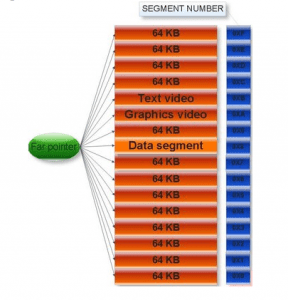
Q29. What is FILE?
FILE is simply a predefined data type defined in stdio.h file.
Q30. What are the differences between Structure and Unions?
- Every member in structure has its own memory, whereas the members in a union share the same member space.
- Initialization of all the member at the same time is possible in structures but not in unions.
- For the same type of member, a structure requires more space than a union.
- Different interpretations of the same memory space is possible in union but not in structures.
Q31. Write a C program to find the size of structure without using sizeof operator?
Q32. What is the difference between .com program and .exe program?
Both these programs are executable programs, and all drivers are .com programs.
- .com program executes faster than .exe program.
- .com file has higher preference than .exe type.
Some Interesting C Interview Questions:

The execution depends on the amount machine instruction to carry out the operation in the expression. n++ requires only a single machine instruction, such as INR, to carry out the increment operation. On the other hand, n+1 requires more machine instructions to carry out this operation. Hence, n++ executes faster than n+1 in C.
2. Is int x; a declaration or a definition? What about int x = 3; and x = 3; ?
3. What is the parent of the main() function?
The parent of main() function is header files – the <stdio.h> header file.
4. Write a C program to print the next prime number for any number entered by the user.
5. Write a C program to solve the “Tower of Hanoi” question without using recursion.
Try this yourself.
6. Create an array of char type whose size is not known until its run, i.e., the size must be given by the user.
Hints are given in the source code below. If you want to use array finish, you must free it to return resources to memory.
Other Commonly Asked C Interview Questions:
These are some other commonly asked C interview questions or exam/viva questions. Try answering these on your own, and if you need help with any, mention them in the comments section at the end.
Expression – An expression is the combination of operands and operators.
- What is the difference between declaration and definition of a variable?
- Can static variables be declared in a header file?
- Can a variable be both constant and volatile?
- What are C identifiers?
- Can include files in C be nested?
- What are flag values?
- Write the prototype of printf function.
- What is the use of void data type in C?
- What is the use of typedef in C?
- Differentiate for loop and while loop.
- Why is the main() function used in C?
- What are macros? Mention their advantages and disadvantages.
- Mention the advantages of a macro over a function.
- What is function recursion in C?
- What keyword is used to rename a function in C?
- What is the difference between Calloc() and Malloc() ?
- What is the difference between strings and character arrays?
- What are the differences between sizeof operator and strlen function?
- Differentiate between static memory allocation and dynamic memory allocation.
- What are the uses of pointers in C?
- What is a null pointer assignment error?
- What are enumerations?
- Mention the advantages of using unions in C.
- Differentiate a linker and linkage.
- What is the difference between C++ and C programming?
- What are the advantages of C programming?
- What are the disadvantages of C programming?
- Give an example of error handling in C programming.
- How do you write a program in C?
- What is the difference between C and C++ programming?
- What is the use of C++?
- Give an example of polymorphism in C++.
- What is the difference between object-oriented and procedural programming?
- What are the different memory models?
- What is the difference between static and dynamic linking?
- Explain the use of pointer.
- What is the difference between a variable and a constant?
- Explain the scope of variables.
- What is a statement?
- Explain the difference between goto and break statements?
- What is the difference between the forward and backward jump statements?
- How do you declare an integer variable?
- Define what a loop is?
- What is the difference between while and for loops?
- What is the difference between a conditional and a loop?
- Define what an array is?
- Explain the use of malloc and free functions.
- What are the types of data structures?
- What are the different data types in C?
- What is the difference between a data structure and a variable?
- What is the difference between a character and a string?
- Define the difference between a pointer and an array.
- Define the difference between a linked list and a queue.
- Define the difference between a stack and a heap.
- Define the difference between a stack and a queue.
- What is the difference between char and character?
- What is the difference between signed and unsigned integer types?
- What is the difference between byte and word types?
- What is the difference between pointer and array types?
- What is the difference between float, double, and long integer types?
- How to declare and use variables?
- What is the difference between integer and real types?
- What is the difference between structure and union types?
- What is the difference between arrays and pointers?
- What is the difference between functions and subroutines?
- What are the return values of functions?
- What is the difference between switch and if statement?
- What are the differences between for loop and while loop?
- What is the difference between goto and break statements?
- What is the difference between enum and typedef?
- What are the differences between const and volatile?
- What is the difference between inline and static?
- What is the difference between static and volatile?
- What is the difference between static and extern?
- What is the difference between extern and static?
- What is the difference between static and global?
- What are the differences between typedef, enum, union, and struct?
- What is the difference between char, int, float, and long?
- What is the difference between void and int?
- What is the difference between void and char?
- What are the differences between union and struct types?
- What are the differences between function and procedure types?
- What is the difference between void and return types?
- What is the difference between class and interface types?
- What is the difference between pointers and arrays?
- What is the difference between arrays and references?
- What is the difference between arrays and pointers?
So, what do you think of the C interview questions mentioned here? Did you find them new, difficult, interesting or boring: we would like to hear your feedback. Also, you can suggest us more interview questions that would suit this post.
You Might Also Like
Program c: building foundations with the c language, s in c programming: understanding string manipulation, program with c: starting your journey in c programming, c programming language: the foundation of system software, programs c language: creating efficient solutions.
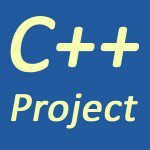
Nice article, I was searching for something like this i was browsing the net since ours but dint find exact question and answers which justifies the question your article is the best and have all the important questions include in it.
program to swap two variables without using a third variable doesn’t work in code blocks?
int main() { int a, b; scanf(“%d%d”,&a,&b); a=a+b; b=a-b; a=a-b; printf(“\n After swap a=%d b=%d”,a,b); return 0; }
Q: How we use graphics in C ?
Too nyc will help to upcoming students who are searching jobs
Which c programs are may ask in national c code writing competitions
Q:- Which program is used to convert object code into source code in c/c++? plz help me
I sort of get this question as — how does a source code become a program? Are you asking how does a source code get converted into object code?
If yes, the answer is compiler. Source code is turned into object code by a compiler. Then, once the object code is passed through a linker, an executable program comes into existence.
Leave a Reply Cancel reply
Your email address will not be published. Required fields are marked *
Latest Posts

Creating a Google Sheet to Track Google Drive Files: Step-by-Step Guide

Cutting-Edge Artificial Intelligence Project Unveiled in Machine Learning World

Enhancing Exams with Image Processing: E-Assessment Project
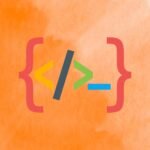
Cutting-Edge Blockchain Projects for Cryptocurrency Enthusiasts – Project

Artificial Intelligence Marvel: Cutting-Edge Machine Learning Project
Privacy overview.
Sign in to your account
Username or Email Address
Remember Me

Javarevisited Newsletter
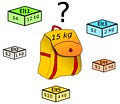
15 LeetCode Problems to Get Better at Dynamic Programming
Master the art of dynamic programming with these 15 curated leetcode problems. practice key concepts, hone your problem-solving skills, and get ready to ace your next coding interview.

Hello guys, Dynamic programming (DP) is a powerful technique used to solve complex problems by breaking them down into simpler subproblems but at the same time, its one of the tricky topic for interviews.
It’s really important to master DP for coding interviews, especially for tech giants like Google, Facebook, and Amazon.
Earlier, I have shared Coding interview guides and resources and In this guide, I'll share 15 LeetCode problems that are perfect for sharpening your DP skills.
Each problem in this list will push you to think about subproblems, memoization, and optimal substructure, and you'll tackle everything from classic "house robber" problems to complex matrix-based challenges.
📣 Frontend Masters Knowledge Quest SALE (Sponsored)

FrontendMasters.com is one of the most recommended place to learn frontend end skills. They have high quality courses on Algorithms, JavaScript, React, TypeScript, and Node.js and they are now offering $100 off on their subscription which is quite rare.
If you always wanted to join frontend masters but couldn’t join now is the time but hurry up sale ends in 6 days, on 18th September.
Get Started
15 Dynamic Programming Problems for Coding Interviews
Whether you're new to DP or looking to hone your skills, these problems will help.
1. Climbing Stairs
Problem Description : You are climbing a staircase with n steps. You can either take 1 step or 2 steps at a time. In how many distinct ways can you climb to the top? LeetCode Link : Climbing Stairs Tip : Think of it as a Fibonacci sequence where the number of ways to get to step n is the sum of the ways to get to steps n-1 and n-2 .
2. House Robber
Problem Description : A robber is deciding which houses to rob tonight, but he cannot rob two adjacent houses. Find the maximum amount of money he can rob. LeetCode Link : https://leetcode.com/problems/house-robber/ Tip : For each house, decide whether to rob it (and skip the adjacent one) or skip it. Use dynamic programming to store the optimal result for each house.
3. Longest Increasing Subsequence
Problem Description : Given an array of integers, find the length of the longest increasing subsequence. LeetCode Link : Longest Increasing Subsequence Tip : Use a DP array where each element at index i stores the length of the longest increasing subsequence that ends at i . Compare each element with all the previous elements to update the DP array.
4. Coin Change
Problem Description : Given an array of coin denominations and an amount, determine the fewest number of coins needed to make up that amount. LeetCode Link : Coin Change Tip : Think of this as a knapsack problem where you are trying to minimize the number of coins. Use a bottom-up DP approach to find the solution.
5. Partition Equal Subset Sum
Problem Description : Given a non-empty array, determine if the array can be partitioned into two subsets such that their sums are equal. LeetCode Link : Partition Equal Subset Sum Tip : This problem can be reduced to a 0/1 knapsack problem. Use a DP array where each index represents whether a subset with that sum is possible.
6. Unique Paths
Problem Description : You are given an m x n grid. Your task is to count how many unique paths exist from the top-left corner to the bottom-right corner, only moving right or down. LeetCode Link : Unique Paths Tip : Use a DP table where each cell contains the number of paths to reach that cell. The value is the sum of the paths from the cell above and the cell to the left.
7. Edit Distance
Problem Description : Given two strings, find the minimum number of operations (insertions, deletions, or substitutions) required to convert one string into the other. LeetCode Link : Edit Distance Tip : Create a 2D DP table where dp[i][j] represents the minimum operations needed to convert the first i characters of one string to the first j characters of the other string.
8. Minimum Path Sum
Problem Description : Given an m x n grid filled with non-negative numbers, find a path from the top-left to the bottom-right which minimizes the sum of the numbers along the path. LeetCode Link : Minimum Path Sum Tip : Use a DP table where each cell contains the minimum path sum to reach that cell. Update the value by considering the cell above and the cell to the left.
9. Word Break
Problem Description : Given a string and a dictionary of words, determine if the string can be segmented into a space-separated sequence of dictionary words. LeetCode Link : Word Break Tip : Use a DP array where each index represents whether the substring up to that index can be segmented. Update it by checking all substrings and whether they are in the dictionary.
10. Palindromic Substrings
Problem Description : Given a string, count how many palindromic substrings exist. LeetCode Link : Palindromic Substrings Tip : Use a DP table to store whether a substring is a palindrome. Start with smaller substrings and expand outward to check larger ones.
11. Longest Palindromic Subsequence
Problem Description : Given a string, find the longest palindromic subsequence. LeetCode Link : Longest Palindromic Subsequence Tip : Use a DP table where each cell stores the length of the longest palindromic subsequence in a substring. Expand the substring size and check for matches at the two ends.
12. Decode Ways
Problem Description : Given a string of digits, determine the total number of ways to decode it into letters where 'A' = 1, 'B' = 2, ..., 'Z' = 26. LeetCode Link : Decode Ways Tip : Use a DP array where each index represents the number of ways to decode the substring up to that index. Consider both one- and two-digit combinations.
13. Burst Balloons
Problem Description : Given n balloons, each balloon has a number on it. Burst the balloons in such an order that maximizes the coins you collect. LeetCode Link : Burst Balloons Tip : Use DP and memoization to store the maximum coins you can collect for each subarray of balloons.
14. Maximum Product Subarray
Problem Description : Given an integer array, find the contiguous subarray within an array which has the largest product. LeetCode Link : Maximum Product Subarray Tip : Keep track of both the maximum and minimum product ending at each index. A negative number can turn a large negative product into a large positive product.
15. Regular Expression Matching
Problem Description : Implement regular expression matching with support for '.' and '*' . LeetCode Link : Regular Expression Matching Tip : Use a DP table where each cell represents whether a substring matches the pattern up to that point. Handle * and . with special cases.
Best Places to Prepare for Coding Interviews 💻
DesignGurus.io - Link 🏗️ Perfect for mastering system design interviews with in-depth, practical examples and explanations.
AlgoMonster - Link 🔥 A streamlined platform for practicing key coding interview problems efficiently with bite-sized explanations.
Educative - Link 🧠 Interactive, text-based learning for coding interviews, with a focus on problem-solving and data structures.
Udemy - Link 🏅 A vast collection of coding interview prep courses with hands-on exercises and expert instructors.
ZTM Academy - Link 🚀 Learn from industry experts with real-world projects and an active community to help you excel.
CodeCademy - Link ✍️ Practice coding interview concepts and skills with interactive lessons and hands-on projects.
LeetCode - Link 🏆 The go-to platform for solving hundreds of coding interview questions, categorized by topic and difficulty.
Coursera - Link 🎓 Access top university-led coding interview prep courses, covering everything from algorithms to problem-solving techniques.
Also here is a nice coding interview preparation cheetsheet you can use to guide your preparation
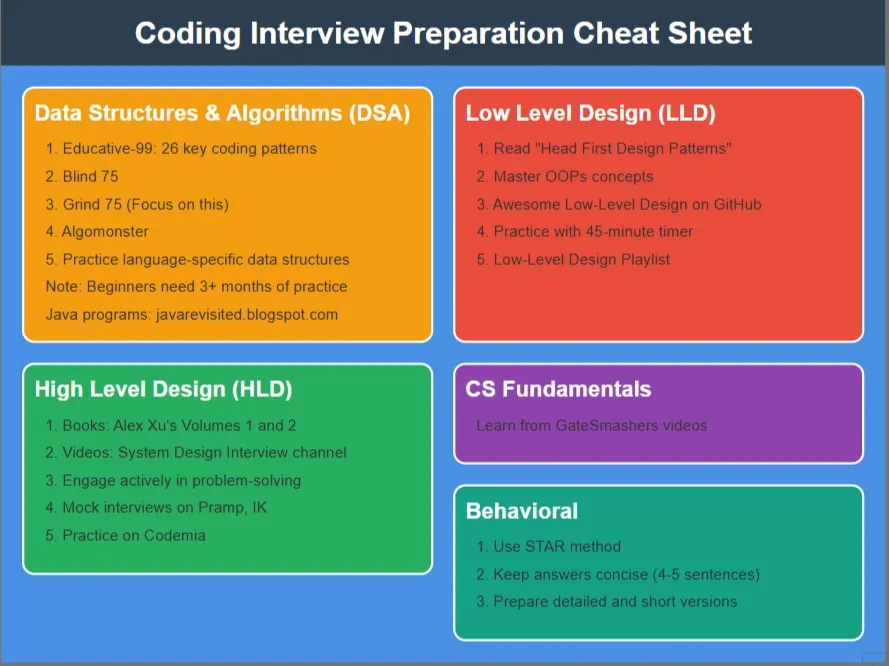
If you need more choices then you can also see this post from Ashish Pratap Singh

That’s all guys. Dynamic programming is a powerful technique that can solve complex problems by breaking them into smaller subproblems. These 15 LeetCode problems will help you practice DP in various forms, ranging from simple to more advanced problems. With these problems, you’ll be able to sharpen your skills and ace your next interview!
Other coding interview and tech interview articles you may like
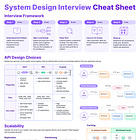
15 Best Places to Prepare for System Design and Coding Interviews in 2024
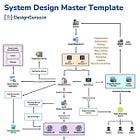
How to System Design Twitter?
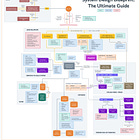
8 System Design Problems for Interview Practice
All the best with your coding interview prep.
Javarevisited Newsletter is a reader-supported publication. To receive new posts and support my work, consider becoming a free or paid subscriber.
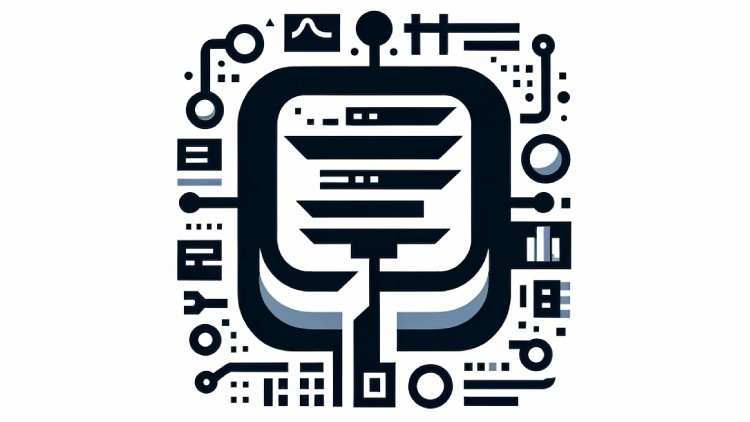


IMAGES
VIDEO
COMMENTS
Learn how to solve common coding problems with code on Java, C#, Python and JS for your next coding interview. See examples of arrays, binary trees, linked lists, stacks, queues, hash tables and more.
Boost your coding interview skills and confidence by practicing real interview questions with LeetCode. Our platform offers a range of essential problems for practice, as well as the latest questions being asked by top-tier companies. ... Discuss; Interview. Store Study Plan. See all. Array 1737. String 721. Hash Table 625. Dynamic Programming ...
Most coding questions aren't specific to a particular programming language, allowing a programmer to write code in their language of choice. However, some coding interviews will have questions that test a specific language required by the role. ... 15 Common Problem-Solving Interview Questions. Software Engineering Questions to Know in 2022.
Learn how to test candidates' problem-solving skills with technical and non-technical questions. Find out the key insights, methods and examples for effective problem-solving interview questions.
P: Plan your approach and solution. I: Implement your solution. R: Review your solution. E: Evaluate your solution. To prepare for a whiteboard challenge, "practice talking through your problem-solving process," says Archie Payne, president of CalTek Staffing, an IT and technical staffing firm.
In this article, we list 47 programming interview questions and provide some example answers for you to study. ... They might also ask this question to assess a candidate's analytical thinking and problem-solving skills and use your response as a basis to move into more in-depth questions about duplicating arrays. In your response, you can ...
By the way, the more questions you solve in practice, the better your preparation will be. So, if you think 100 coding problems are not enough and you need more, then check out these additional 50 programming questions for telephone interviews and these books and courses for more thorough preparation. All the best for your coding interview.
Check 25+ JavaScript Coding Interview Questions (SOLVED with CODE) and Land Your Next Six-Figure Job Offer! 100% Tech Interview Success! ... Reactive Programming 12 . Redis 25 . Redux 35 . Ruby 84 . Ruby on Rails 72 . Rust 38 . SQL ... One solution to get around this problem is to round the results when doing arithmetic with decimal numbers.
Now, on to the 5 types of coding interview questions you need to master: [blank_space height='0.1em'] 1. Basic programming interview questions. Early in the interview (and also throughout), interviewers are looking to test you on your programming fundamentals. These are questions on general programming terms, concepts, and functions.
Consider that, for a given number N, if there is a prime number M between 2 to √N (square root of N) that evenly divides it, then N is not a prime number. 5. Write a Java program to print a Fibonacci sequence using recursion. A Fibonacci sequence is one in which each number is the sum of the two previous numbers.
As with the other companies mentioned, Google Python interview questions will depend on the role and level of experience. However, some common questions include: 23. Define a lambda function, an iterator, and a generator in Python. The Lambda function is also known as an anonymous function.
Strings 25. Being powerful, flexible, and well-supported has meant C# has quickly become one of the most popular programming languages available. Today, it is the 4th most popular programming language, with approximately 31% of all developers using it regularly. Follow along and check 34 most common C# Coding Interview Questions (SOLVED) for ...
We just published a course on the freeCodeCamp.org YouTube channel that will teach you how to solve 10 common coding problems and improve your problem-solving skills. This course was developed Inside code. He is an experienced developer and has a good understanding of the types of coding challenges often used in programmer interviews.
Top 50 Algorithms and Coding Interview Questions. Without any further ado, here is my list of some of the most frequently asked coding interview questions from programming job interviews: 1. Array Coding Interview Questions. An array is the most fundamental data structure, which stores elements at a contiguous memory location.
Identifying and solving these dynamic programming problems is vital to crack the coding interview. In order to crack the coding interview, problem-solving skills are just as necessary as technical skills. Identify the problem type, break it into smaller parts, and develop a plan for solving it. Creative problem-solving is at the core of every ...
Problem-solving interview questions are questions that employers ask related to the candidate's ability to gather data, analyze a problem, weigh the pros and cons and reach a logical decision. ... Top 10 Programming/Coding Interview Questions. Common Personality Questions Asked in an Interview (And What They Reveal) Explore more articles.
Here's a list of additional java interview questions that hiring managers may ask you: 41. Write a program to sort a sequence of numbers in ascending order. 42. Using Java 8 date-time library in CLASSPATH (package private) file, write a program that shows how you can add time to any time with respect to midnight on Jan. 1, 2000.
Q17. Write a C program to swap two variables without using a third variable. This is one of the very common C interview questions. It can be solved in a total of five steps. For this, I have considered two variables as a and b, such that a = 5 and b = 10. #include<stdio.h>. int main(){. int a=5,b=10; a=b+a;
Ace your technical interviews with our Complete Interview Preparation course! Get comprehensive coverage of all key topics like arrays, dynamic programming, trees, and more, designed to help you succeed in coding interviews. Perfect for beginners and pros alike! Mathematical . Print the pattern (You only need to write function here) ; Print table (This is a full code problem.
Here is the collection of the Top 50 list of frequently asked interview questions on Dynamic Programming. Problems in this Article are divided into three Levels so that readers can practice according to the difficulty level step by step. ... These interviews are designed to assess a candidate's problem-solving abilities, technical knowledge ...
Master the art of dynamic programming with these 15 curated LeetCode problems. Practice key concepts, hone your problem-solving skills, and get ready to ace your next coding interview! ... 🏆 The go-to platform for solving hundreds of coding interview questions, categorized by topic and difficulty.
This question allows you to demonstrate your problem-solving skills. The interviewer wants to see how you handle obstacles, such as tight deadlines, limited resources, or conflicting requirements. How to Answer: Focus on a real challenge you faced. Emphasize your problem-solving approach and adaptability. Sample Answer:
Here is the collection of the Top 50 list of frequently asked interview questions on Dynamic Programming. Problems in this Article are divided into three Levels so that readers can practice according to the difficulty level step by step. ... These interviews are designed to assess a candidate's problem-solving abilities, technical knowledge ...
Here is the collection of the Top 50 list of frequently asked interview questions on Dynamic Programming. Problems in this Article are divided into three Levels so that readers can practice according to the difficulty level step by step. ... These interviews are designed to assess a candidate's problem-solving abilities, technical knowledge ...
JCL Interview Questions and Answers Preparation Practice Test | Freshers to Experienced | Detailed Explanations What you will learn Master Essential JCL Concepts Develop Proficiency in JCL Statements and Utilities Implement Conditional Processing and Job Dependency Enhance Problem-Solving and Interview Readiness Why take this course? 🚀 JCL Mastery: Ace Your Interviews with Expert Practice ...
The Water Jug Problem is a classic puzzle in artificial intelligence (AI) that involves using two jugs with different capacities to measure a specific amount of water. It is a popular problem to teach problem-solving techniques in AI, particularly when introducing search algorithms.The Water Jug Problem highlights the application of AI to real-world puzzles by breaking down a complex problem ...
C, a foundational programming language, continues to be a vital tool for software development. Its efficiency, low-level control, and portability make it ideal for systems programming, embedded systems, and performance-critical applications. Mastering C opens doors to a wide range of career opportunities in the tech industry. This course offers a unique opportunity to deepen your C programming ...